INSIDE: GOLDEN GRAINS
MIDDLE EAST & AFRICA

MILLERS CORNER
Harrison Omega
COMMODITIES UPDATE
Barley in Africa
TECHNOLOGY FOCUS
Extrusion
COUNTRY FOCUS
Morocco
EVENT REVIEW
IAOM MEA
Regional Forum

MILLING
MILLING & GRAINS | BAKING & SNACKS | ANIMAL FEED & PET FOOD | PLANT-BASED FOODS YEAR 2 | ISSUE NO. 8 | FEBRUARY - MARCH 2024 WWW.MILLINGMEA.COM
CEO Paul Kamau discusses association’s role in elevating the status of Kenya’s feed industry
TOP IN AFRICA
BARLEY PRODUCERS
SCAN ME





THE CEO SUMMIT ON THE FUTURE OF SUSTAINABLE FOOD SYSTEMS IN AFRICA AFRICA FUTURE FOOD SUMMIT Safari Park Hotel, Nairobi, Kenya SEPTEMBER 10-12, 2024 info@fwafrica.net +254 725 343 932 www.africafuturefoodsummit.com INVESTING IN & FUNDING FOOD ENTERPRISES FOOD INNOVATION FOOD NUTRITION & SUSTAINABILITY FOOD MARKETS, TRADE & LOGISTICS FOOD TECHNOLOGY KEY AGENDA ISSUES WELCOME TO REGENERATIVE AGRICULTURE SCAN ME Events

24
FEATURE

30
EXECUTIVE INTERVIEW - MARK LYONS, MD, GOLDEN GRAIN GROUP INTERNATIONAL
Golden Grain Discusses Flour Milling Expertise for Africa

33
MILLERS CORNER - HARRISON OMEGA
FEB/MARCH 2024 | MILLING MIDDLE EAST & AFRICA WWW.MILLINGMEA.COM 1 CONTENTS YEAR 2 | ISSUE NO. 8 | FEB-MARCH 2024
(AKEFEMA)
- ASSOCIATION OF KENYA FEED MANUFACTURERS
Empowering millers, feeding a nation
on the do's
of
milling ON THE COVER - Paul Kamau, CEO, Association of Kenya Feed Manufacturers
Harrison Omega
and dont's
feed
•
•
• Bunge introduces plant-based alternative to butter in the
• Selu Limited to invest US$80M at Galana Kulalu after successful pilot phase
• DSM-Firmenich to separate Animal Nutrition & Health division amid vitamin market downturn
• Ethiopia launches Jigjiga flour and bread factory in Somali Region
• Tunga Nutrition Uganda launches a new plant in Kampala
• Kitui Flour Mills to acquire 100% stake in Rafiki Millers
• Cameroon allocates US$698M to wheat import

with
• Puratos unveils sourdough made with regeneratively farmed flour
• Bühler eyes emerging rice processing opportunities in Saudi
• Kemin Industries introduces new blend to enhance freshness of dry bakery products
• GoodMills Innovation unveils Slow Milling ingredients for artisanal baking
• Omas Industries expands into UK and northern Europe
successfully concludes sale of South Korean business
FEB/MARCH 2024 | MILLING MIDDLE EAST & AFRICA WWW.MILLINGMEA.COM 2 Supplier News & Innovations:
acquisition
Dawn Foods expands bakery solutions portfolio
Royal Steensma
Arabia
6 52 CONTENTS YEAR 2 | ISSUE NO. 8 | FEB-MARCH 2024 Persistent drought threatens food security prospects Extrusion, the decades old technology driving new product development in thee 21st century 42 36 30 50 46 Editorial News Update:
Ingredion
4
East
Middle
substitution program TECHNOLOGY FOCUS - EXTRUSION COUNTRY FOCUS - MOROCCO
10 - BARLEY PRODUCERS IN AFRICA COMMODITIES UPDATE - BARLEY IN AFRICA 42 46 36
REVIEW
IAOM MEA REGIONAL FORUM 2024
TOP
EVENT
-



Your Team for Great Flour















The Flourists, Part 5: Baking Technology
Protecting Baking Traditions through Innovative Ideas.




Baking industry demand for suitable ours is rising globally, and we’re supplying highly speci c answers. Developers of individual our treatment concepts: The Flourists, an interdisciplinary, worldwide networked team of experts who put their all into adapting our characteristics to the requirements of local baking applications. Thanks to our regional Technology Centers, customers get unique our additives developed locally, that are designed specifically for local baking traditions and varying grain qualities. The result: Diversity in baking culture and consistently good baking quality in ours, for professional and home use.
#the
ourists muehlenchemie.com
MILLING
MIDDLE EAST & AFRICA
Year 2 | Issue No.8 | Feb-March 2024
FOUNDER & PUBLISHER
Francis Juma
SENIOR EDITOR
Paul Ongeto
EDITORS
Martha Kuria | Wangari Kamau
BUSINESS DEVELOPMENT DIRECTOR
Virginia Nyoro
BUSINESS DEVELOPMENT ASSOCIATE
Vivian Kebabe
HEAD OF DESIGN
Clare Ngode
CINEMATOGRAPHER
Newton Lemein
ACCOUNTS
Jonah Sambai
Published By: FW Africa
P.O. Box 1874-00621, Nairobi Kenya
Tel: +254725 343932
Email: info@fwafrica.net
Company Website: www.fwafrica.net
Quality Feeds for Quality Animals
Welcome to the eighth edition of Milling Middle East and Africa Magazine.
Kenya's animal feed market is experiencing significant growth, driven by rising protein demand, a larger livestock population, and informed farmers seeking quality feed to maximize livestock returns.
As the industry expands, stakeholders have revitalized the previously inactive Association of Kenya Feed Manufacturers (AKEFEMA) with a singular mission: fostering a conducive environment for feed businesses and promoting profitable livestock farming through the production of high-quality animal feed.
One year into his tenure, CEO Paul Kamau expresses pride in the association's achievements under his leadership. Operational structures are now established, and dedicated committees address specific industry challenges, including technical expertise, trade, and public relations.
With these structures in place, the association is now tackling a pressing "triple threat": the availability of raw materials, feed quality, and cost, which are currently the Kenyan feed industry's biggest challenges.

how the country is navigating this challenge and others impacting the grain and milling industry.
Barley, essential for feed for Moroccan and North African livestock farmers, is not widely produced in Africa. We analyze production forecasts for the 2023/24 season in our "Commodity Update," focusing on the handful of producers – Ethiopia, Morocco, Algeria, and South Africa –that account for over 80% of Africa's production.
Milling Middle East & Africa is published 4 times a year by FW Africa. Reproduction of the whole or any part of the contents without written permission from the editor is prohibited. All information is published in good faith. While care is taken to prevent inaccuracies, the publishers accept no liability for any errors or omissions or for the consequences of any action taken on the basis of information published.
Harrison Omega, Process Supervisor - Feed Mill and Soy Extrusion Plant at Unga Group Limited, acknowledges the valuable role AKEFEMA plays in the industry. In our "Millers' Corner," he shares essential insights on animal feed milling best practices.
Morocco's feed industry faces a shortage of its primary raw material: barley. Our "Country Focus" examines


This issue also explores extrusion technology, the top 10 barley producers in Africa, and the latest news from Africa, the Middle East, and the world.
We hope that you enjoy your read.
Paul Ongeto Senior Editor
FW Africa


FEB/MARCH 2024 | MILLING MIDDLE EAST & AFRICA WWW.MILLINGMEA.COM 4
EDITORIAL
OUR PUBLICATIONS WWW.FWAFRICA.NET MILLING MIDDLE EAST & AFRICA Food Africa Business HealthCare MIDDLE EAST & AFRICA www.foodsafetyafrica.net www.healthcaremea.com www.ceobusinessafrica.com www.freshproducemea.com www.dairybusinessafrica.com www.foodbusinessafrica.com www.millingmea.com www.sustainabilitymea.com Packag ng AFRICA SUSTAINABLE
COMPLETE PLANT SOLUTION PARTNER
UNDERSTANDING YOU. STANDING BY YOU.
As leaders in our industry, we understand the intricacies and challenges involved in running an efficient feed and biofuel plant.
That’s why we have dedicated ourselves to being your go-to-partner, offering complete plant solutions, tailored to your exact specifications and needs.
Leveraging our extensive processing expertise and experience, we ensure the lowest possible total cost of ownership. But we don‘t stop there. With meticulous attention to detail and unwavering dedication, we guide you through every phase – from delivery to commissioning and tackle any challenge, ensuring the success of your project.
Choose ANDRITZ Complete Plant Solutions for a secure, consistent, and end-to-end experience that takes you from PLAN to PLANT, whether it‘s a green or brown field. Trust in our expertise, reliability, and commitment to delivering excellence.
Find out how our complete plant solutions can serve your business at andritz.com/ft.
A/S T: +971 (04) 214 6546
Andritz.com/ft
ANDRITZ FEED & BIOFUEL
/ Email: andritz-fb.uae@andritz.com
FEED & BIOFUEL
BY WWW.MILLINGMEA.COM
Bunge introduces plant-based alternative to butter in the Middle East
MEA – Bunge, a global leader in food and agribusiness, has announced the launch of Beleaf™ PlantBetter in the Middle East and Africa region.
This innovative plant-based alternative to butter, celebrated for its exceptional taste, texture, and versatility comparable to dairy butter, follows the successful launch of Eleplant, the retail version of Beleaf PlantBetter, in Europe last November.
Beleaf PlantBetter is poised to address the growing demand for highquality, environmentally responsible
FOOD SECURITY
butter substitutes.
Bunge will introduce this groundbreaking plant-based innovation at the Gulfood expo in Dubai from February 19 to 23, 2024, at booth Z1-F3 in Za’abeel Hall 1.
As the demand for dairy alternatives continues to soar, Beleaf PlantBetter emerges as the solution to the challenges faced by food manufacturers and bakers seeking plant-based alternatives that replicate the sensory qualities and functional versatility of traditional dairy butter.
TARI launches five-year project to boost drought-tolerant rice farming
TANZANIA – The Mbeya-based Tanzania Agricultural Research Institute (TARI) Uyole Centre has launched a-five-year drought-tolerant rice growing project geared to support Tanzania’s efforts towards becoming an African food basket.
Launching the project, coordinator from TARI, Dr Dennis Tippe said that the
FOOD SECURITY
efforts were as a result of collaboration between agricultural researchers and experts from at least 17 countries.
Sponsored by International Rice Research Institute (IRRI), the project is aimed at enhancing production in the country, according to Dr Tippe.
“This is very possible as the project is mostly characterized by modern farming technologies. It is implemented
in the southern highlands zone, the area that provides over 40 percent of the rice in the country.
“We will have demonstration farms to sharpen extensions officers and rice farmers’ knowledge, including an application of modern technologies, hence, phasing out all tra- ditional farming methods,” he said.
Kenya to revive stalled US$122M Soin-Koru dam in a bid to boost rice production

KENYA – In a fresh attempt to revive the stalled KES 19.9 billion (US$122M) Soin-Koru dam project, the government has started negotiation with contractors to resume work in a bid to bolster rice production in Ahero irrigation scheme.
This comes six months after the contractor, China Jianxi International Kenya Limited and China Jianxi International Economic and Cooperation Company Limited, suspended operations citing non-payment.
Speaking during a tour of the project,
Zachariah Njeru, Water and Irrigation Cabinet Secretary has assured the public that the Government was committed to ensure that the project located on the border of Kisumu and Kericho counties, takes-off to boost rice production in Ahero.
The project fully funded by the Government of Kenya, started on 27th August 2022 after nearly three decades of planning. The contractor was demanding KES 846.5 million (US$5M) before resuming excavation works.

FEB/MARCH 2024 | MILLING MIDDLE EAST & AFRICA WWW.MILLINGMEA.COM 6
INNOVATION
NEWS UPDATES
JBS invests US$117M in 3 new Brazilian feed factories to boost Seara’s production capacity
BRAZIL – JBS, a leading global food company, is finalizing investments totaling 570 million reais (approximately US$117 million) for constructing three new feed factories in Southern Brazil to align input supply with the expanding production capacity of Seara Foods.
The new facilities, located in Seberi (RS), Santo Inácio (PR), and Itaiópolis (SC), aim to enhance feed production by over 1 million tonnes per year, further solidifying JBS’s commitment to bolstering Seara’s presence in the poultry and swine segments.
“The new factories are equipped with the latest automation and feature the highest available technology for
input production. These investments demonstrate our continuous effort to expand our production capacity,” stated João Campos, President of Seara.
“By reinforcing our presence in these cities, we strengthen our commitment to the socio-economic development of the regions where we operate.”
The investments underline JBS’s commitment to leveraging the latest automation and technology for input production, ensuring enhanced control over the quality of the final products. The expansion is anticipated to strengthen Seara’s production capacity and contribute to the socio-economic development of the regions involved.





COMMODITY TRADING
DSM-Firmenich to separate Animal Nutrition & Health division amid vitamin market downturn
NETHERLANDS – DSM-Firmenich has announced plans to separate its Animal Nutrition & Health (ANH) division from the broader group.
This move is aimed at insulating the division from the volatile vitamins market, a decision prompted by the division's substantial performance challenges.
The company believes that unlocking the full potential of the ANH business requires a different ownership structure. As such, DSM-Firmenich is exploring various separation options and anticipates completing the process by 2025.
The decision to separate follows a tumultuous year in 2023, marked by persistent low prices in the vitamins market.
In its full-year 2023 earnings forecast, DSM-Firmenich estimated an
adverse impact of approximately €500 million from vitamin price fluctuations, along with a further negative effect of around €90 million due to foreign exchange dynamics.
To address these challenges, DSMFirmenich unveiled comprehensive restructuring plans for its vitamins business in its Q2 2023 trading update.
These plans include the closure of a second vitamin production facility in China and extended shutdowns of Swiss vitamin plants.
These restructuring efforts are expected to yield annual savings of approximately €200 million (US$215.59m) and are projected to contribute €100 million (US$108m) to adjusted EBITDA in 2024, with the full €200 million (US$215.59m) contribution expected in 2025.
New high yielding, stress tolerant maize variety making breakthrough in Somalia’s agriculture

SOMALIA – Maize farmers in Somalia have hailed a new hybrid maize variety, already registering a staggering 30 to 50% increase in yield potential as compared to local varieties since its introduction late last year.
Dubbed Siman, the high-yielding variety has been termed as a significant breakthrough for Somalia’s agriculture.
The new variety was officially registered in October 2023, heralding a new era for variety release in the country and it is a testament to the power of collaboration and innovation in agriculture.
According to experts, the hybrid not only exhibits uniformity in the field but also matures a week earlier than local varieties and performs better under moisture and nutrient stress.
It owes its origins to CIMMYT’s Stress Tolerant Maize for Africa (STMA) program, generously supported by the Bill and Melinda Gates Foundation (BMGF) and USAID.

The milestone is the hard work of Filsan Seed Company in partnership with the International Maize and Wheat Improvement Center (CIMMYT) aimed at boosting maize production in Somalia.

The variety has been greatly embraced by farmers, reporting impressive harvests.
According to Farhia Mohamud Mohamed, leader of Deeq Agriculture Cooperative, a 5-ha plot yielded a harvest of 136 bags of Siman grain each weighing 100 kg, compared to a mere 120 kg from the local variety on 25 ha.
FEB/MARCH 2024 | MILLING MIDDLE EAST & AFRICA WWW.MILLINGMEA.COM 8 NEWS UPDATES
FOOD SECURITY STRATEGY








SARIT EXPO CENTRE, NAIROBI, KENYA JUNE 12-14, 2024 Dairy AFRICA MANUFACTURING EXPO www.dairymanufacturingafrica.com SCAN ME Africa Dairy 2.0 - Taking Africa's Dairy Industry into the Next Level through Innovation & Sustainability AFRICA’S NO.1 DAIRY INDUSTRY TRADE SHOW & CONFERENCE SIGN UP TO ATTEND , SPONSOR & EHIBIT Events
Nairobi Flour Mills puts business on sale
KENYA – The Nairobi Flour Mills, renown for Jimbi maize and wheat brands, have put up the business for sale at an asking price of KES400 million (US$2.5M).
Prospective buyers of Nairobi Flour Mills will take over its assets including equipment, Godowns, offices and two plots measuring 1.124 acres in Nairobi’s Industrial Area.
“The sale price is Sh400 million, negotiable. The owners closed down the milling plant. They are too old to manage it and this is why they are putting it up for sale,” a source familiar with the matter told Business Daily.
With a production capacity of 255 tonnes per day, the plant has two lines for producing two-kilogram packets of flour and one line for processing onekilogram packets of flour.
Interested buyers were advised that the facility is ideal for an agricultural cooperative society dealing in maize value addition.
Kenya targets 80M bags of maize in 2024, opens aflatoxin testing center in Meru
KENYA – Kenya aims to produce 80 million bags of maize, its staple crop, in 2024 to enhance self-reliance in food production.
Agriculture Cabinet Secretary Mithika Linturi disclosed that farmers yielded 61 million bags of maize in 2023, emphasizing the need for proper storage to ensure food security.
Speaking at the inauguration of a
new aflatoxin testing laboratory at the National Cereals and Produce Board (NCPB) depot in North Imenti, Meru County, Linturi highlighted the dangers of aflatoxins, which are highly toxic substances affecting grains and posing health risks to animals and humans, including cancer.
The establishment of the aflatoxin testing laboratory aims to safeguard the safety of consumed food, especially in regions like Meru, which has a high prevalence of cancer. Linturi underscored the importance of producing safe food to combat health issues.
Expressing optimism, Linturi mentioned the government's intensified distribution of fertilizer to farmers and its target of producing 80 million bags of maize in the current year, surpassing the national consumption average.
He highlighted the distribution of mobile maize dryers to assist farmers in drying their crops properly, emphasizing the government's efforts to mitigate post-harvest losses.
INVESTMENT
Ethiopia launches Jigjiga flour and bread factory in Somali Region

ETHIOPIA – Abiy Ahmed, Prime Minister of the Federal Democratic Republic of Ethiopia has presided over the inauguration of Jigjiga Flour and Bread Factory in Somali Region.
The PM was accompanied by First Lady Zinash Tayachew during Somali Regional State visit where they oversaw different development projects on February 13.
According to Abiy, the project is one of the many pro-poor initiatives led by the Office of the First Lady and marks the eighth out of twelve factories being built across the country.
This is “a step forward in our journey towards sustainable development and support for our communities,” he noted.
In Ethiopia, wheat is the second cereal cultivated after corn. While production in the country is one of the highest on the continent, the processing segment is still struggling to meet domestic demand.
By 2020, the Ethiopian Milling Association (EMA) reported that its affiliate members were operating at only 20% to 30% of their installed capacities because of wheat shortages, with the average national milling capacity estimated at 50%.
FEB/MARCH 2024 | MILLING MIDDLE EAST & AFRICA WWW.MILLINGMEA.COM 10 NEWS UPDATES
MARKET UPDATE MARKET UPDATE










Africa’s Largest Food Manufacturing, Retail & HORECA Industry Trade Shows FOOD Afmass EXPO Transforming Africa’s Food Systems SIX PAVILLIONS THAT COVER THE FOOD INDUSTRY FROM A-Z +254 725 343932 www.afmass.com info@fwafrica.net SCAN ME KENYA NIGERIA SEPTEMBER 17-19, 2024 Afmass NIGERIA EXPO FOOD Afmass UGANDA EXPO FOOD SEPTEMBER 3-5, 2024 FOOD Afmass EXPO Eastern Africa JUNE 12-14, 2024 UGANDA TEA, COFFEE C COA AFRICA EXPO & Events
Egypt seeks US$145M to establish six wheat silos in 2024

Mondelez to close biscuit factory in France putting 61 jobs at stake
FRANCE – Mondelez International has announced closure of its biscuit plant in France by the end of 2025 to “safeguard its competitiveness.”
The move would lead to loss of 61 jobs at the plant by mid-2026.
According to the company, production at the Château-Thierry site in Aisne, northern France will be phased out over the next two years.
In a statement, Mondelez stated that the Château-Thierry site has no capacity for new production lines and its current production rate is lagging behind its other sites.
“Despite the measures taken in recent years to optimise production, production at Château-Thierry costs on average twice as much as other Mondelez International sites in the rest of Europe, with no prospect of improvement,” a statement read.
EGYPT – Egyptian authorities plans to establish six wheat silos in 2024 at an investment cost of US$145.6 million, Zawya has reported.
The French Development Agency (AFD) will finance the project with US$61.5 million, with the country to provide the remaining sum of US$84.1 million, according to sources.
The move aims to shore up the country’s storage capacity of wheat silos by 420,000 tonnes to reach a total capacity of 4.620 million tonnes, representing about 10% of the country’s current total capacity,
The sources pointed out that the
ACQUISITION
government is targeting to increase the storage capacity of state-owned wheat silos by at least 2.5 to 3 million tonnes within three to four years to reach a capacity ranging between 6.4 and 7 million tonnes.
The announcement comes after Egypt’s state grains buyer, the General Authority for Supply Commodities (GASC) revealed that it plans to purchase more than 5 million tonnes (MT) of wheat in 2024 through international tenders.
This objective is an increase of 500,000 tonnes compared to imports made in 2023.
Petsource by Scoular completes US$75 million expansion
USA – Petsource, an indirect subsidiary of Scoular known for its efficient production of freeze-dried pet food, has announced the completion of its US$75 million expansion project, aimed at supporting the burgeoning demand for freeze-dried pet food products.
This significant investment not only triples the company’s production capacity but also paves the way for welcoming new customers into its stateof-the-art facility.
The expansion, which adds an impressive 70,000 square feet of manufacturing space dedicated to freeze-dried pet food ingredients, comes as a response to the exponential growth observed in this segment of the pet food industry.
Freeze-dried products have witnessed a surge in popularity, and Petsource’s enhanced capabilities position it as a leader in meeting this escalating demand.
Moreover, this expansion has led to the creation of 75 new jobs, with

plans for further hiring in the pipeline. With a current workforce of over 150 employees, Petsource now stands as one of the top 10 largest employers in Seward County, reinforcing its commitment to driving economic growth in the region.
FEB/MARCH 2024 | MILLING MIDDLE EAST & AFRICA WWW.MILLINGMEA.COM 12 NEWS UPDATES
FOOD SECURITY
DIVESTMENT
Sarit Expo Centre, Nairobi, Kenya



AFRICA’S BIGGEST MEAT, POULTRY, FISH & SEAFOOD INDUSTRY TRADE SHOWS
Discover innovative products and the latest technologies and market trends in the meat, poultry, fish and seafood industry in Africa and globally.
AFRICA EXPO MEAT & JUNE
12-14, 2024
www.africameatpoultryexpo.com Events
Nestle to discontinue two biscuit brands due to decline in sales
UK – Nestlé UK has announced that it is discontinuing making two of its popular chocolate biscuit bars Breakaway and Yorkie, to make way for investment across its wider portfolio of products.
The company is known for a range of products including KitKat, Smarties, Quality Street, Haagen-Dazs and Cheerios.
According to the company, the chocolate-coated biscuits will no longer be produced from March with remaining stocks sold by Sainsbury’s over the next couple of months.
Nestle says this decision has been taken due to a decline in sales, and in an effort to “make way for investment and innovation” across the company’s wider portfolio of products.

First manufactured all the way back in 1970, Breakaway, the chocolate digestive biscuit bars have made their way into many a school lunchbox or stuffed into pockets for an on-the-go sweet treat.
Speaking on the reason behind Breakaways being discontinued, a spokesperson for Nestlé UK & Ireland expressed concern about fans being disappointed to see it go, but he maintained that the decision was critical for the business.
“We have seen a decline in sales over the past few years, and unfortunately, we had to make the difficult decision to discontinue it,” added the spokesperson.
Tunga Nutrition Uganda launches new plant in Kampala
Minister of Agriculture, Animal Industry & Fisheries.
future by ensuring people in Uganda and the East African region at large have equitable access to nutritious food by supporting farmers in producing animal protein (eggs, meat, milk) optimally and sustainably.
He also expanded on the range of products and services that Tunga offers ranging from concentrates, complete feed and minerals, adding that this feed mill investment means a lot for distributors, farmers and suppliers.
Tunga Nutrition is a joint-venture animal nutrition business of Nutreco International BV & Unga Holdings Plc renowned for producing and distributing both the Hendrix Concentrate and the Fugo complete animal feed.
The launching ceremony was presided by Frank Tumwebaze, the
Speaking during the launch, Tumwebaze said the government is pushing for manufacturers like Tunga Nutrition who produce results backed by innovation and science because it makes it easier for Ugandans, young and old, to continue being a part of agriculture.
On his part, Toochukwu Chido, Tunga’s General Manager said that Tunga Nutrition’s purpose is to feed the
TUNGA NUTRITION IS A JOINT VENTURE ANIMAL NUTRITION BUSINESS OF NUTRECO INTERNATIONAL AND UNGA GROUP HOLDINGS
FEB/MARCH 2024 | MILLING MIDDLE EAST & AFRICA WWW.MILLINGMEA.COM 14
UGANDA – Tunga Nutrition Uganda, a leading animal feeds manufacturer in Uganda, has launched its ultra-modern feeds mill in Ntinda, Kampala.
NEWS UPDATES
INVESTMENT
STRATEGY
PLC.










Africa's No.1 food safety and quality conferences and trade shows +254 725 343932 www.africafoodsafetysummit.com info@fwafrica.net SCAN ME AFRICA Food Safety SUMMIT NIGERIA Western Africa Edition | Lagos, Nigeria AFRICA Food Safety SUMMIT Eastern Africa Edition | Kampala, Uganda AFRICA Food Safety SUMMIT SEPTEMBER 17-19, 2024 SEPTEMBER 3-5, 2024 Events
IGC forecasts record global grain output in 2023-24

GLOBAL – At its 59th council session held in New Orleans on Jan. 24, the International Grains Council (IGC) announced that global grain production is set to achieve a record high of 2.307
billion tonnes in the 2023-24 season, largely attributed to a robust recovery in corn output.
Chaired by Anita Katial, the USDA’s Agricultural Counselor for the United Kingdom and Republic of Ireland, the meeting highlighted a projected 2% year-over-year increase in both grain production and consumption, reaching 2.307 billion tonnes and 2.314 billion tonnes, respectively.
Global inventories are expected to contract by 1%, reaching 590 million tonnes, marking the seventh consecutive drawdown.
Meanwhile, world trade is anticipated to decrease by 3%, totaling 415 million tonnes, with reduced shipments of wheat, corn, and barley.
The IGC noted a potential 1% decline in global wheat harvested area for 202425 due to lower prices and suboptimal sowing weather in certain regions. While rapeseed/canola plantings may contract, they are projected to remain above average.
Soybean production is forecasted to reach a record 392 million tonnes, marking a 6% year-over-year gain, mainly tied to expectations of a rebound in Argentina. Consumption is predicted to peak, and aggregate inventories are set to climb for the second consecutive year, including accumulation in key exporting countries.
WORLD TRADE IS ANTICIPATED TO DECREASE BY 3%, TOTALING 415 MILLION TONNES, WITH REDUCED SHIPMENTS OF WHEAT, CORN, AND BARLEY.
Kitui Flour Mills to acquire 100% stake in Rafiki Millers
KENYA – Kenyan-based Kitui Flour Mills, the maker of the ‘Unga wa Dola’ wheat and maize flour brand, is set to acquire a 100 percent stake in Rafiki Millers Limited.
The proposed acquisition has been given a nod by the Competition Authority of Kenya ruling, which stated that the transaction is unlikely to negatively impact competition in the market for wheat milling, nor elicit negative public interest concerns.
“The analysis considers the impact that the proposed transaction will have on public interest which includes the extent to which a proposed merger would impact employment opportunities, competitiveness of SMEs,
particular industries/sectors, and the ability of national industries to compete in international markets,” said the Authority.
After the merger, the assets of Kitui Flour Mills are set to cross the KES 1 billion (US$6M).
Founded in 1982, Kitui Flour Mills is among Kenya’s producers of home products such as Premium Maize Flour, Dola Wheat Flour, Dola Chapati Flour, Atta Flour, and Baba Lao Maize Flour, among others.
CAK noted that the manufacturer commands 13% of the wheat milling market and is the third largest firm behind Mombasa Maize Millers (22%) and Grain Industries Limited (15%).
FEB/MARCH 2024 | MILLING MIDDLE EAST & AFRICA WWW.MILLINGMEA.COM 16 NEWS UPDATES
MARKET UPDATE
ACQUISITION








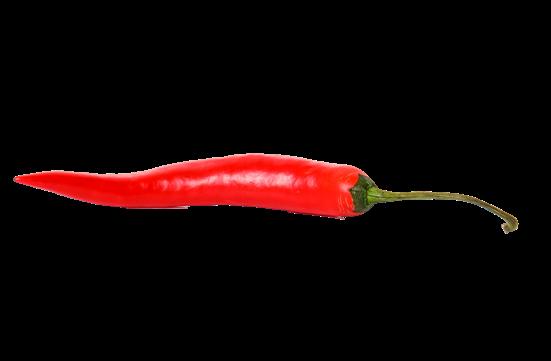



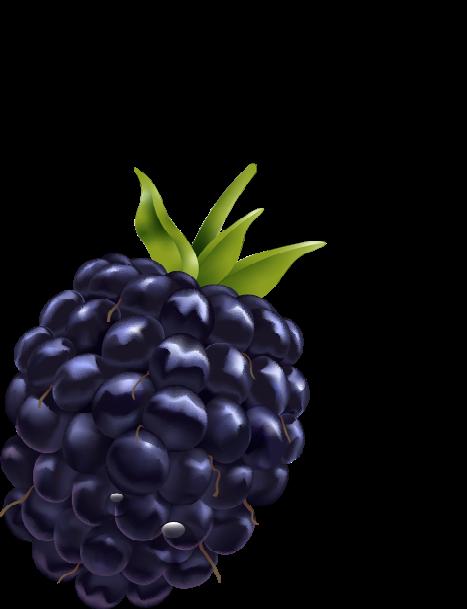
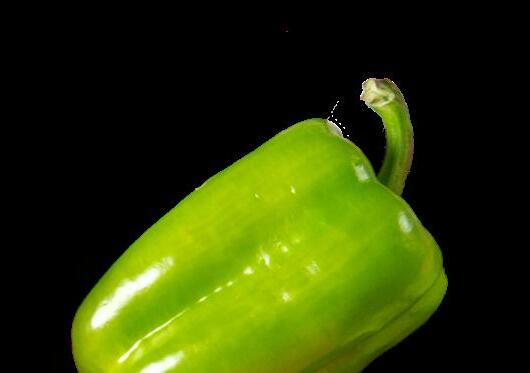



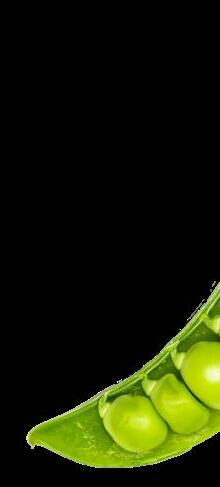


AFRICA EXPO Fresh Produce AFRICA’S NO.1 FRESH PRODUCE INDUSTRY TRADE SHOW Fresh Produce Market Logistics & Mobility Machinery & Technology Agro-Inputs & Chemicals Services & More WHAT’S ON SHOW AT THE EXPO
Africa Fresh Produce Expo will consist of the following Sections: Events CO-LOCATED WITH: JUNE 12-14, 2024 – Sarit Expo Centre, Nairobi, Kenya www.africafreshproduceexpo.com FOOD Afmass EXPO Transforming Africa’s Food Systems
The
Egypt
intends to purchase 5M tonnes of wheat, short grain rice in international tender in 2024
EGYPT – Egypt’s state grains buyer, the General Authority for Supply Commodities (GASC) plans to purchase more than 5 million tonnes (MT) of wheat in 2024 through international tenders, according to the Ministry of Supply and Domestic Trade.
This objective is an increase of 500,000 tonnes compared to imports made in 2023.
According to Nassr Nomani, the adviser to the head of the ministry, the domestic consumption of the grain crop currently exceeds 20 million tonnes per year.
At the same time, he noted, the total production is just over 9million tonnes, hence, the government and the private sector supplements the deficiency by
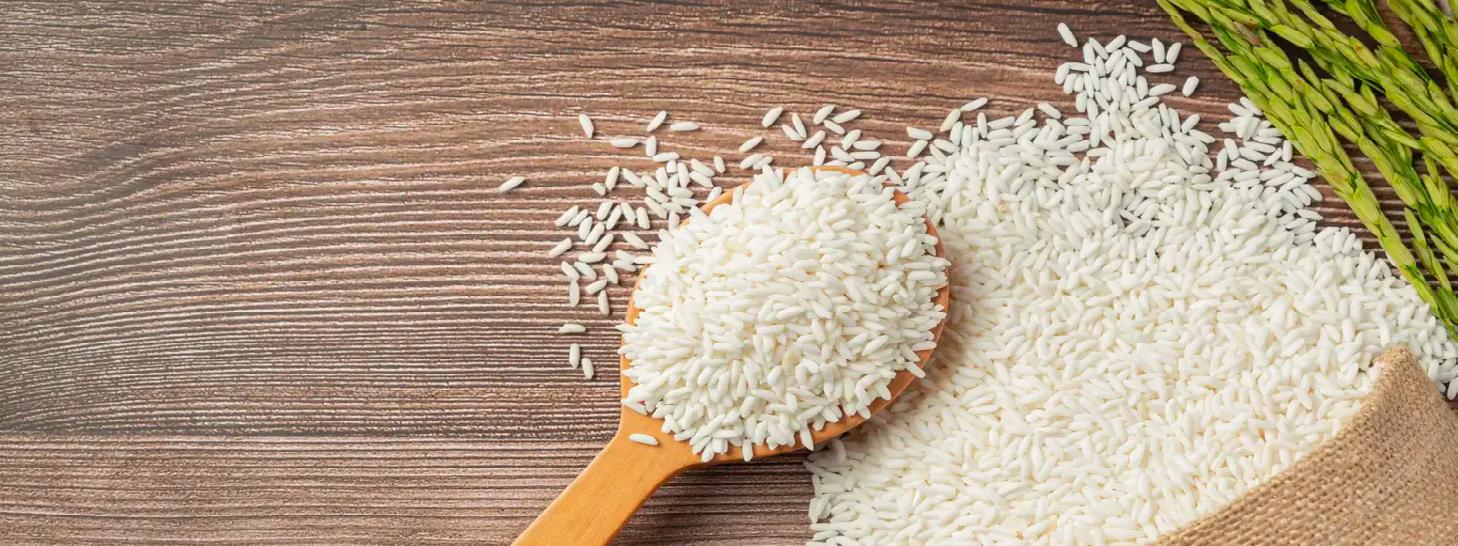
importing 11 million tonnes.
In 2023, Egypt purchased about 4.5 million tonnes of wheat through GASC tenders, including almost 3 million tonnes from Russia, 780,000 tonnes from Romania, 360,000 tonnes from France, 270, 000 tonnes from Bulgaria
and 120,000 tonnes from Ukraine.
Overall, wheat purchases reached 10.8 million tonnes in 2023, representing a 14.7% jump from 2022, according to data from traders relayed by Reuters.
Reuters linked this rebound in imports to the overall drop in world wheat prices.
Innscor Africa to boost capex with up to US$60M investment in 2024

ZIMBABWE – INNSCOR Africa
Limited, a diversified consumer staple manufacturer in Zimbabwe intends to spend between US$50 million and US$60 million on capital programs in the 2024 financial year, as the conglomerate continues to consolidate its local and regional market share.
The intended capital expenditure follows a cumulative US$125 million
that was deployed in capital investments across the Innscor business units in the past two years.
Mr Addington Chinake the Innscor’s board chairperson, revealed this while presenting the 2023 annual report.
According to Mr. Chinake, the group’s business models continue to undergo constant refinement to ensure that the group remains adaptive and relevant in a dynamic and complex
operating environment.
“This investment program has allowed for the establishment of new business units and products enabled the expansion and modernizing of existing manufacturing lines, extended existing product categories, and will ultimately enhance the overall manufacturing efficiencies and capabilities of the Group as critical mass is reached,” the statement read.
The company said the investments would span its subsidiaries including the beverages, milling, baking, protein, and packaging segments all scheduled for completion in the 2024 financial year.
In the bakeries division, the investments will be directed at the Harare plant automation initiatives and recapitalization of Baker’s Inn delivery fleet.
FEB/MARCH 2024 | MILLING MIDDLE EAST & AFRICA WWW.MILLINGMEA.COM 18 NEWS UPDATES
INVESTMENT MARKET UPDATE




The Africa Business Summit is the ground-breaking executive level conference and expo on the future of strategic leadership, entrepreneurship, sustainability & african transformation
The program at the 3-day Summit comprises of a number of premium sessions such as Leadership Dialogues, CEO Roundtables, Plenary and Panel Discussions and a B2B Deal Connect Service as well as presentations by influential people and change makers who are making waves – and inspiring the next generation of leaders in Africa

Co-located with:


SEPTEMBER 10-12, 2024 |
Nairobi,
Safari Park Hotel,
Kenya
* *
SUSTAINABILITY FORUM Digitalisation & Tech Innovation Sustainable Business & ESG Strategic Leadership Pan-African & Global Trade Financing, Investing & Financial Inclusion Industrialisation & Infrastructure Development Supply Chain & Logistics Transformation Human Capital Development KEY AGENDA
SCAN ME BUSINESS SUMMIT AFRICA
THE AFRICA CEO LEADERSHIP &
www.africabizsummit.com
& Sustainability
Events
The Africa CEO Leadership
Forum
Selu Limited to invest US$80M at Galana Kulalu after successful pilot phase
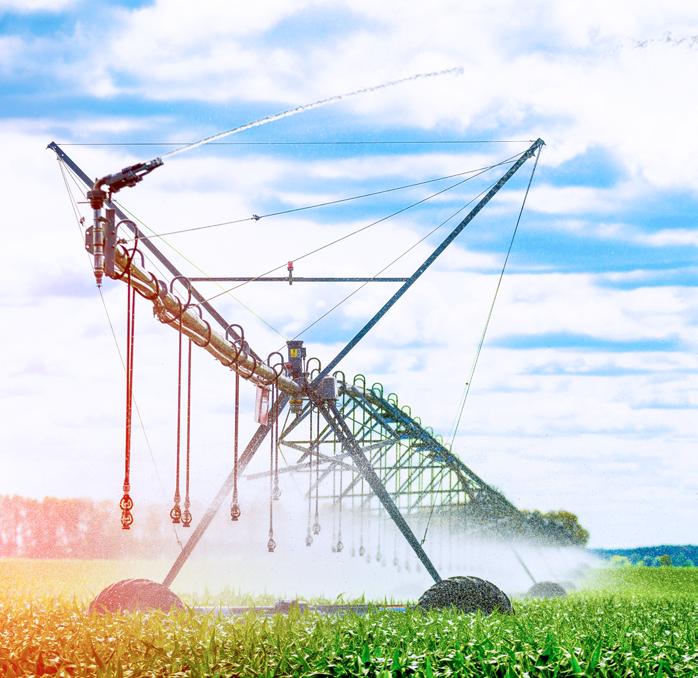
KENYA – Selu Limited has announced a significant investment of US$80 million (KES13 billion) in the Galana-Kulalu, a
national food security project, over the next three years following a successful pilot phase last year.
Selu Limited is a Special Purpose Vehicle, a partnership consisting of various companies, including Campos, a farm management company with vast experience overseeing extensive farmland in Latin America with a climate similar to Kenya, and AgCo, a global leader in precision agriculture technology based in the United States.
For Selu, this move aims to expand the company’s operations to over 20,000 acres within the Galana-Kulalu irrigation project.
Selu has revealed that it has concluded the initial development phase
FOOD SECURITY
Tanzania to build US$1.4B modern industrial park, fostering economic growth
TANZANIA – Tanzania has commenced building a modern industrial park project located at Disunyara and Kikongo, Mlandizi District of Kibaha in the coast region, set to revitalize the country’s economy.
At a projected cost of 3.5 trillion (US$1.4B) until completion, the project is an investment of the Kakama Company Limited of Dar es Salaam in collaboration with the Government of Tanzania.
Dr. Ashatu Kijaji, the Minister of Industry and Trade, while visiting the project noted that Tanzania decided not to be left behind by the fourth revolution hence the focus on industrial development to build the country in various fields.
The park covers 1077 acres and is expected to establish 202 factories providing direct employment to about 30,000 local youths.
of 500 acres, which involved a feasibility assessment to evaluate the viability of large-scale commercial maize farming in the 1.75-million-acre governmentowned ranch..
The firm says the project implementation was undertaken in partnership with a consortium, consisting of LEAF Africa, CampoBrazil and BrazAfric Group that provided expertise on large-scale tropical commercial farm management.
The firm said the investment would be channelled towards rolling out full irrigation, smart agriculture and introducing renewable energy solutions in the race towards achieving carbonneutral food production.
Cameroon allocates US$698M to wheat import substitution program
CAMEROON – The government of Cameroon and its financial partners have earmarked 417 billion F (US$698M) for the production and processing of wheat in the next five years.
According to Gabriel Mbaïrobe, the Minister of Agriculture and Rural Development, this plan aims to reduce imports of this cereal by 35% and produce nearly 350,000 tonnes of marketable wheat by 2028.
Cameroon produces less than onefourth of the 1.6 million tonnes of wheat it needs each year, forcing it to depend on imports to meet the local demand.
In 2022, wheat shortage worsened following Russia’s war on Ukraine which led to a 40 percent increase in the price of bread in the country.
However, the Cameroonian government is confident that the county has a strong potential for the production and transformation of the wheat sector under the earmarked five-year initiative.
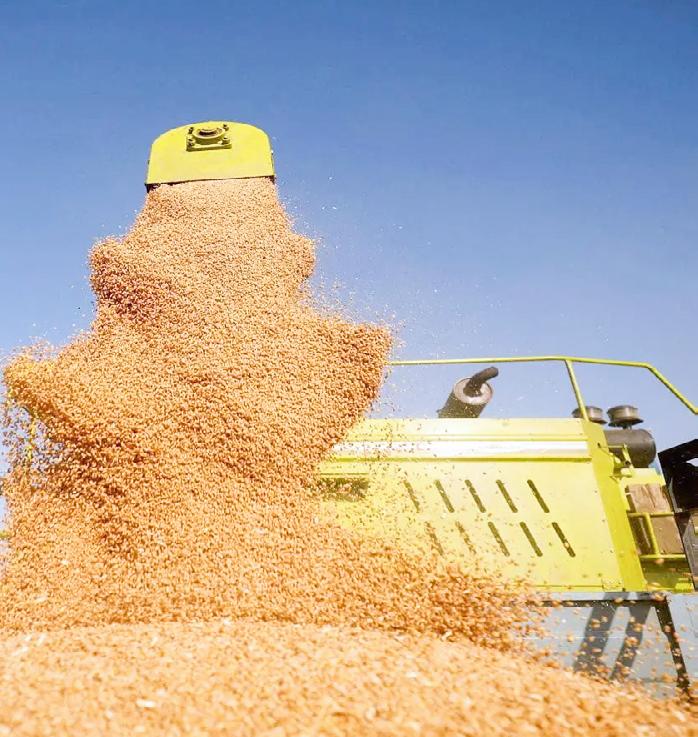
According to the executives, around thirty departments across the country are conducive to the development of this culture.
Additionally, the country has enough primary processing, with nine out of 12 milling companies operational with a capacity of more than one million tonnes per year for a demand of nearly 600,000 tonnes, according to Minader statistics.
FEB/MARCH 2024 | MILLING MIDDLE EAST & AFRICA WWW.MILLINGMEA.COM 20 NEWS UPDATES
INVESTMENT
INVESTMENT
TAP INTO MIDDLE EAST & AFRICA'S GROWING GRAINS INDUSTRY
ADVERTISE IN MILLING MIDDLE EAST & AFRICA - REGION'S ONLY GRAINS INDUSTRY MAGAZINE

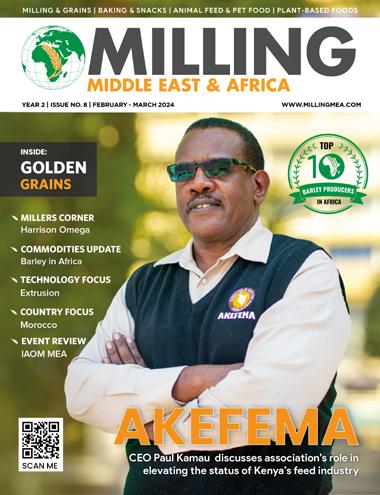

WHY ADVERTISE IN THIS MAGAZINE?
• Reach the key decision makers in Africa & Middle East grains, milling, bakery, animal feed, snacks and pet food industry with one magazine
• Milling Middle East & Africa is the only magazine focused on the grains industry in the region
• The magazine is available in both print and digital format, providing our advertisers with a regional and worldwide audience
• We offer more than just the magazine - we also offer digital advertising, organise industry events and webinars
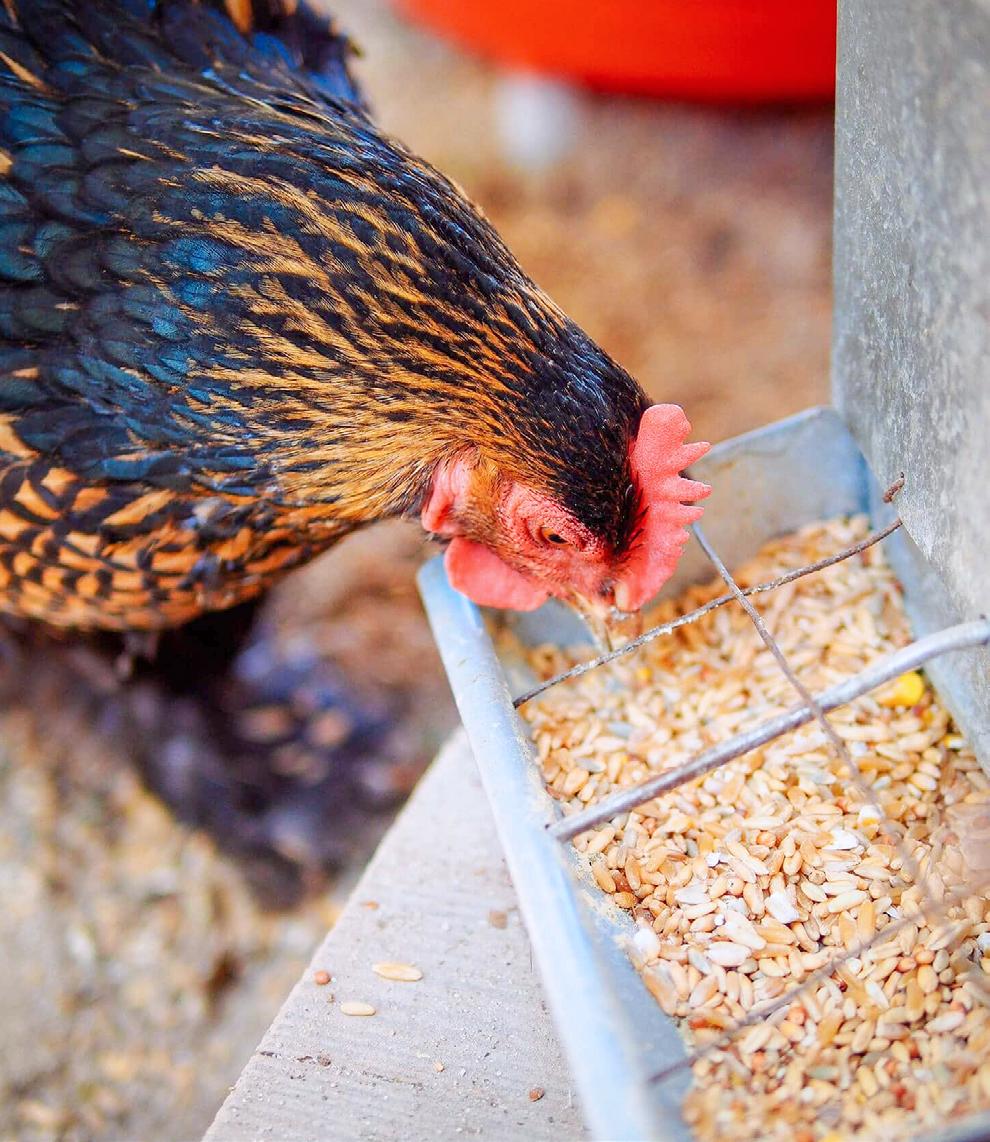






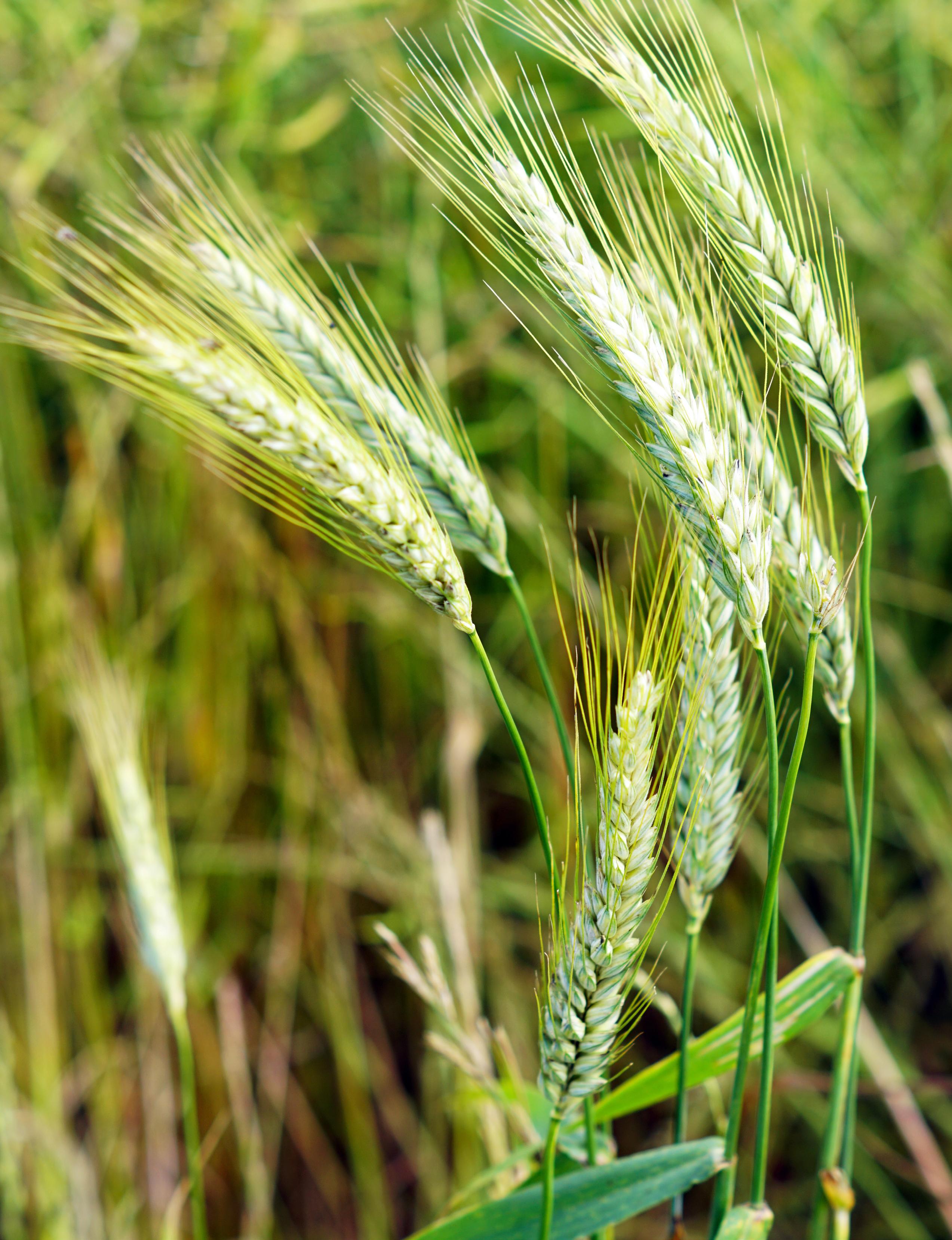
MORE INFO: WWW.MILLINGMEA.COM

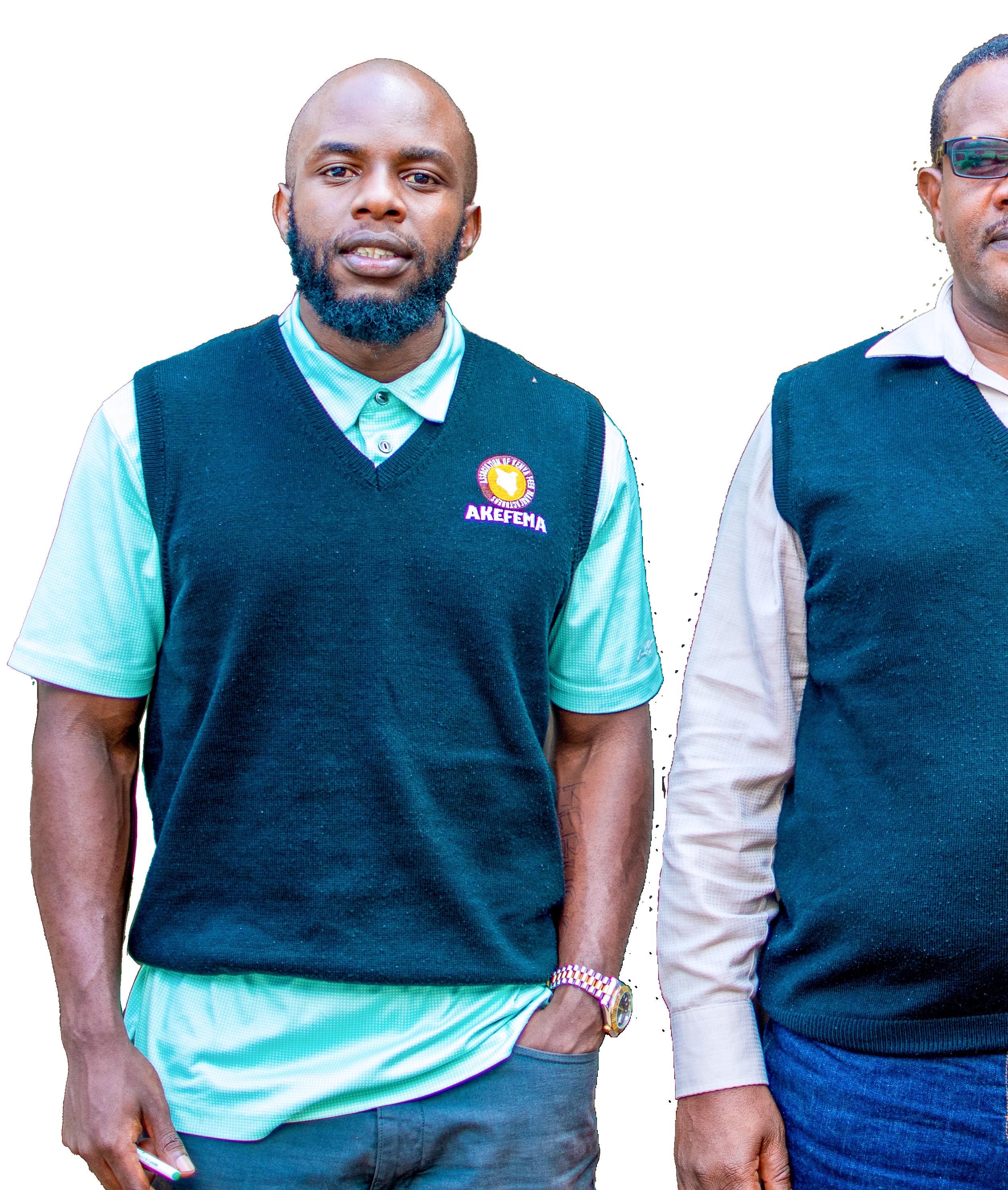
ASSOCIATION OF KENYAN Feed
Manufacturers
Empowering millers, feeding a nation


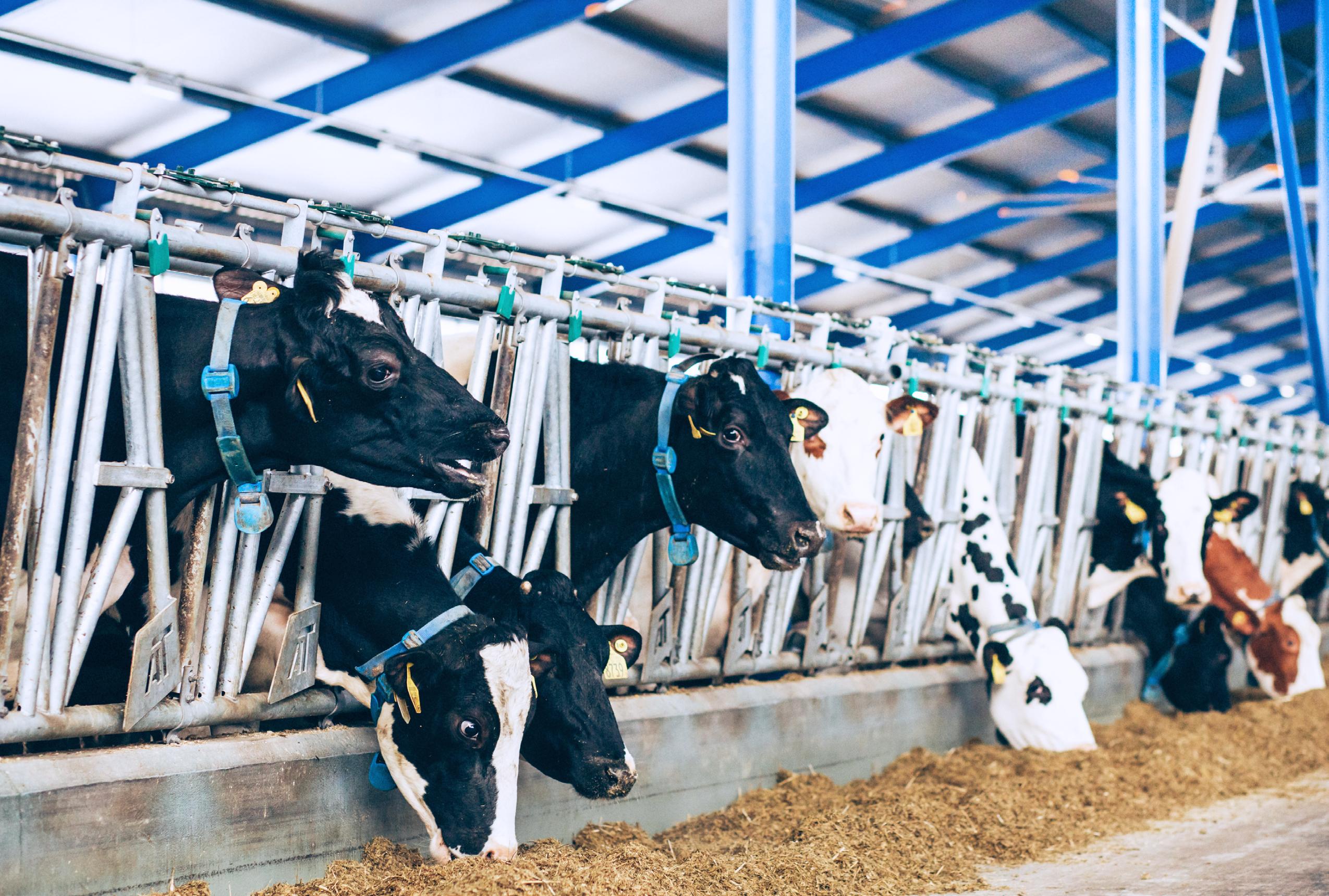 BY WANGARI KAMAU
BY WANGARI KAMAU

Asilent revolution fueled by a growing demand for protein, a rising livestock population, and a relentless pursuit of quality and efficiency, is unfolding within the Kenyan feed industry. At the forefront of this transformation stands the Association of Kenya Feed Manufacturers (AKEFEMA), a revitalized organization under the leadership of CEO Paul Kamau.
AKEFEMA is not only empowering its members but also navigating the industry through a complex and ever-changing landscape, paving the way for a future where "quality feed for quality animals" isn't just a slogan, but a reality
for countless Kenyan livestock farmers.
REKINDLING THE FLAME
Established in 2004, AKEFEMA experienced a period of relative dormancy until its recent revival under Mr. Kamau's leadership in 2023. This revival has been marked by several noteworthy accomplishments. One of the most significant has been the establishment of a well-organized and functional organizational structure.
Dedicated committees, each tackling specific industry challenges like technical expertise, trade, and publicity, now form the backbone of the association. These committees, coupled with continuous training programs for members and partners, have laid a solid foundation for future growth.
NAVIGATING THE CHALLENGES OF RAW MATERIALS, QUALITY, AND COST
Despite the recent positive developments, the Kenyan feed industry is currently grappling with a formidable "triple threat": availability of raw materials, feed quality, and cost. Mr. Kamau highlights the industry's current dependence on imported ingredients, with a staggering 80% of
COMPANY FEATURE: AKEFEMA FEB/MARCH 2024 | MILLING MIDDLE EAST & AFRICA WWW.MILLINGMEA.COM 24
raw materials originating from outside Kenya’s borders. This dependence has been further exacerbated by the ongoing war in Ukraine, creating a supply chain crisis and driving up costs.
To address this challenge, Mr. Kamau emphasizes the urgency of increasing domestic production of key ingredients like maize and soya. "If we could produce all our maize and soya, which are major feed ingredients and comprise almost 60 and 85% (depending on the feed), costs would significantly decrease," he explains. This strategy would not only lessen reliance on volatile imports but also stabilize costs and create a more sustainable supply chain.
EXPLORING ALTERNATIVE RAW MATERIALS AND SUSTAINABLE SOLUTIONS
AKEFEMA, recognizing the need to diversify and mitigate risks associated with imported raw materials, is actively exploring alternative solutions.
One such avenue involves distiller's dried grains with solubles (DDGS), a by-product of the ethanol production process. AKEFEMA is working closely with research institutions like the Kenya Agricultural and Livestock Research
Organization (KARLO) to assess the viability of DDGS as a potential alternative feed ingredient. This collaboration ensures that any new solutions meet stringent quality standards and contribute to the overall health and well-being of livestock. While other options like Black Soldier Fly larvae (BSFL) hold promise,
Mr. Kamau acknowledges the need for largescale production before BSFL can be widely adopted. "We are slowly bringing to our members raw material alternatives but it is gradual. For DDGS, we are working with one of the leading millers in the country and Kenya Agricultural and Livestock Research Organization (KARLO to determine whether it fits the standards that we want or not." he explains.
UNTAPPED POTENTIAL BECKONS
Mr. Kamau reveals a compelling statistic that paints a vivid picture of the immense potential for growth within the Kenyan feed industry: currently, Kenya feeds only 15% of its livestock population. This signifies a vast untapped market, particularly in the arid and semi-arid lands (ASALs) regions, where livestock rearing is the primary source of income for many families. AKEFEMA envisions empowering these
AKEFEMA IS WORKING CLOSELY WITH KALRO TO ASSESS THE VIABILITY OF DDGS AS A POTENTIAL ALTERNATIVE FEED INGREDIENT.

FEB/MARCH 2024 | MILLING MIDDLE EAST & AFRICA WWW.MILLINGMEA.COM 25
OUR MAJOR VISION FOR THE INDUSTRY IS TO ENCOURAGE FARMERS TO COMMERCIALIZE THEIR LIVESTOCK PRODUCTION, USING THE RIGHT FEED AND ANIMAL BREEDS TO GET MORE RETURNS FROM THEIR VENTURES.
communities by enabling commercial livestock production through the use of high-quality, accessible feed.
This vision, if realized, has the potential to not only improve livelihoods but also contribute to food security and economic development in these often-marginalized regions. "Our major vision for the industry is... to encourage these families to commercialize their livestock production, using the right feed and the right animal breeds, to get more returns from their ventures," Mr. Kamau emphasizes.
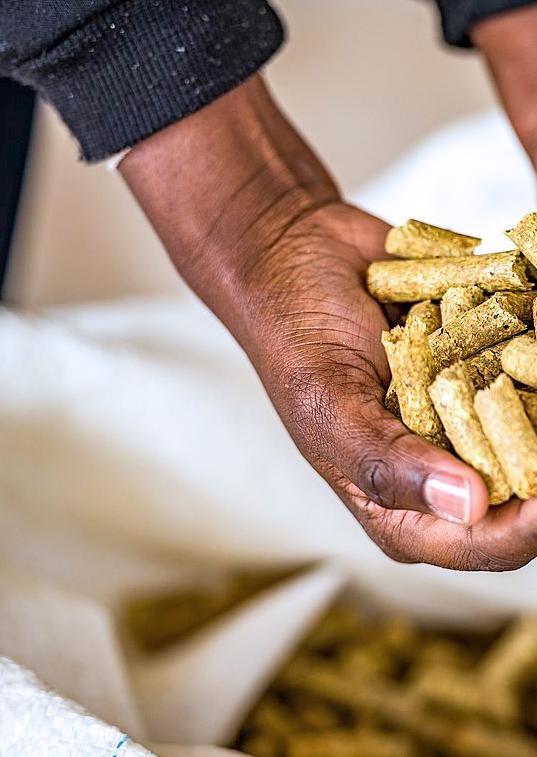
HUNT FOR A MILLER FRIENDLY BANK
Recognizing the need for financial muscle to support the industry's growth, AKEFEMA is

COMPANY FEATURE: AKEFEMA
FEB/MARCH 2024 | MILLING MIDDLE EAST & AFRICA WWW.MILLINGMEA.COM 26

actively seeking partnerships with financial institutions. Mr. Kamau emphasizes the importance of securing "feed millerfriendly" financial institution to help local millers acquire state of the art technologies that will enable them to compete with the anticipated influx of foreign companies. "That is a key role that we seek to play for our members. We are looking for a feed miller-friendly bank... If we can negotiate special AKEFEMA rates of loans for our members, they will be assured to survive and maintain their market share in the face of stiff competition," he explains.
Kamau discloses that the supply side of the equation has already been solved. He assures that suppliers of milling technologies are eager to facilitate essential mill upgrades and capacity expansion. These suppliers are also willing to provide training to the millers on how to apply these technologies. “However, the primary obstacle to these upgrades is financing,” he stresses. Therefore, finding a financially supportive partner would be a game-changer since there is a huge demand for feed as we move towards commercial livestock production, and it presents an opportunity for financial partners to benefit.
ENHANCING FEED SAFETY
AKEFEMA acknowledges that a sustainable future for the Kenyan feed industry hinges not only on efficient production but also on responsible practices and consumer education. The association is working towards establishing an AKEFEMA quality mark to guarantee farmers access to safe and effective feed. "We prioritize the adherence of our millers to the proper standards as their products ultimately go into human food," Mr. Kamau highlights. This initiative, coupled with government efforts to improve storage facilities and minimize post-harvest losses, will create a more robust and sustainable feed industry ecosystem. Such an ecosystem will not only ensure the well-
being of livestock but also safeguard the health and safety of consumers throughout the food chain.
THE AKEFEMA LIVESTOCK EXHIBITION AND CONFERENCE
The upcoming AKEFEMA Livestock Exhibition and Conference, scheduled for July 2024, serves as a testament to the association's dedication to knowledge sharing and fostering innovation.
With a theme of "Resilience and Innovation in an EverChanging Industry Landscape," the conference will bring together a diverse range of stakeholders, including industry experts, farmers, suppliers of raw materials and additives, equipment and service providers, regulators, government departments, universities, and other affiliated institutions. This platform will foster knowledge exchange, facilitates collaboration, and encourages the exploration of innovative solutions to address the industry's pressing challenges.
The conference agenda will encompass technical presentations covering a range of subtopics. Experts will explore the latest advancements in animal nutrition and health, as well as innovation and technology in feeds and feed processing. Given the imperative of sustainability in the feed industry's future, a dedicated session will address topics such as responsible sourcing of raw materials, minimizing environmental impact, and promoting the utilization of renewable energy sources.
Acknowledging milling as a business endeavour, AKEFEMA has organized a session on Financial Vehicles and Opportunities in the market. Financial experts will elucidate various financing options available to feed millers, aiming to bolster the expansion of their enterprises.
The conference will also feature exhibition booths, providing a platform for suppliers to showcase their products and attendees to explore the latest advancements in feed technology, equipment, and services. AKEFEMA hopes that this interactive environment fosters networking opportunities and facilitates the exchange of ideas between various stakeholders within the industry.
A CATALYST FOR TRANSFORMATION
The Kenyan feed industry holds immense growth potential as only 15 percent of livestock in the country utilizes commercial feed. A rejuvenated AKEFEMA is however here to change that narrative.
From fostering commercial livestock production in marginalized regions to creating a more sustainable and efficient feed industry, AKEFEMA's vision extends far beyond the simple act of feeding animals. It encompasses the potential to empower communities, drive economic growth, and contribute to a brighter future for Kenya. The upcoming AKEFEMA Livestock Exhibition and Conference stands as a testament to this vision, bringing together the diverse players within the industry to collectively chart a course for a thriving and transformative future.
FEB/MARCH 2024 | MILLING MIDDLE EAST & AFRICA WWW.MILLINGMEA.COM 27

GOLDEN GRAIN Discusses Flour Milling EXPERTISE FOR AFRICA
Golden Grain Group International (GGI), a flour mill engineering and technology company, is setting its sights on the African market, leveraging its experience in Southeast Asia to offer expertise and equipment to regional millers. We speak with Mark Lyons, a third-generation miller and Managing Director of Golden Grain Group International (GGI).
BY MARTHA KURIA
Thank you for joining us today. Can you tell us a bit about Golden Grain Group International (GGI) and its experience in the flour milling industry?
Absolutely. GGI is a flour mill engineering and technology company with a proven track record. We have a factory in China, a headquarters in Hong Kong, and representatives across the globe. For over 15 years, we've been actively involved in building new flour mills in Southeast Asia, particularly focusing on larger facilities in countries like Indonesia, Philippines, Vietnam, and Thailand.
That's impressive. What prompted GGI's decision to expand into the African market?
We see tremendous potential in Africa's growing economies and a rising demand for higher quality flour. Our experience in Asia has shown a strong link between economic development and the need for better flour. We believe we can offer African millers the expertise and technology to meet this evolving demand.
You mentioned your extensive experience in Asia. Can you elaborate on your personal background in flour milling?
Flour milling is practically in my blood. My grandfather and father were both millers, and I've spent over 30 years in Asia working with millers and engineering firms. This experience has given me a deep understanding of the industry's technical aspects and the specific needs of different regions.
Drawing from your experience in Asia, how do you believe the lessons learned there could benefit the African milling industry?
Over the years, Asia has witnessed a significant evolution in flour quality and milling practices driven by changing consumer demands and international standards. Africa stands to benefit from these experiences, particularly in enhancing food quality, adapting to market needs, and ensuring food
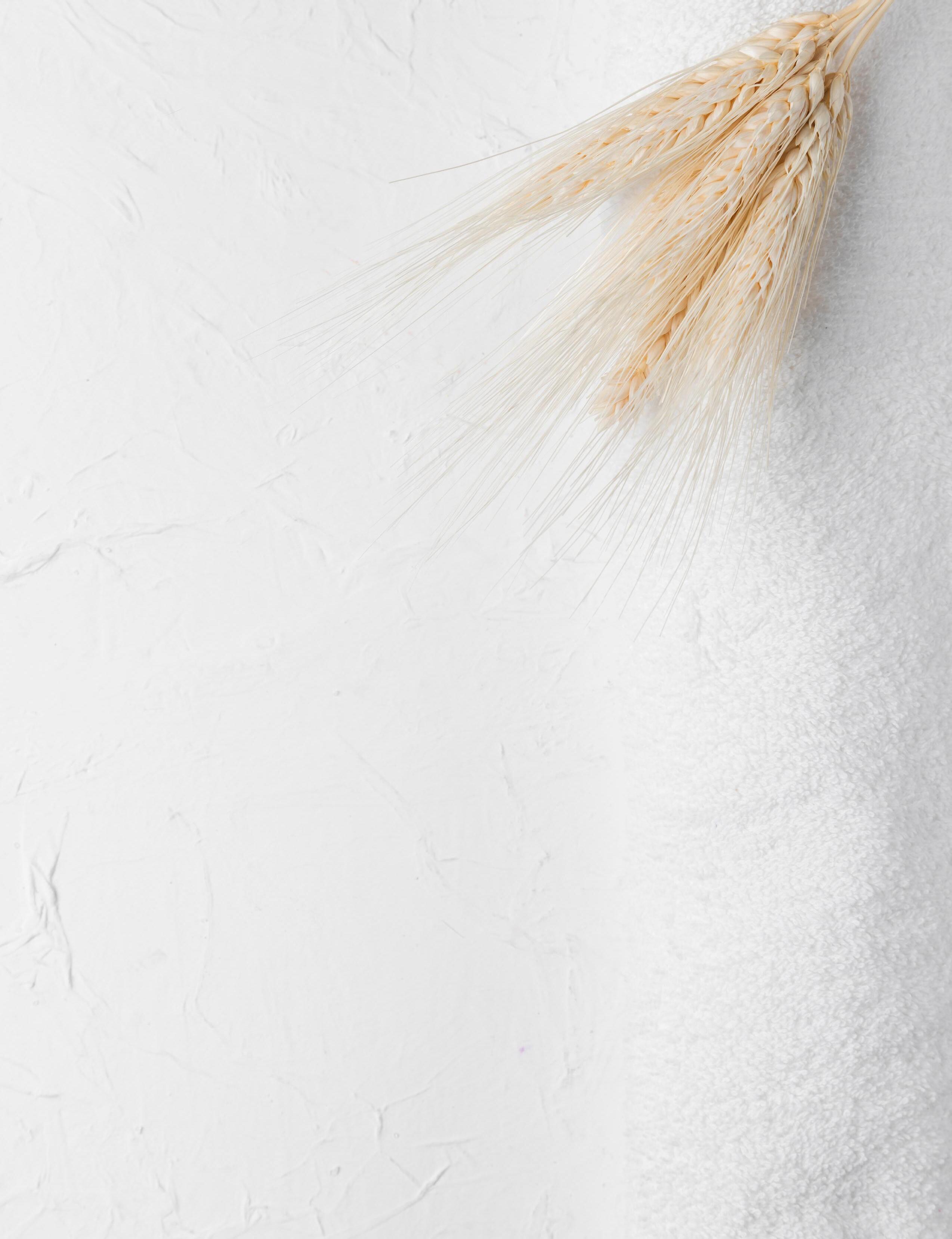
safety standards.
You mentioned partnering with millers. What services does GGI offer in Africa?
We provide a comprehensive range of services, from initial consultation and design to equipment supply, installation, and after-sales support. We want to be a one-stop shop for African millers looking to upgrade their operations or build new facilities.
The rise of fast-food chains in Africa is noticeable. How does GGI address the specific requirements of these international brands?
The growing presence of companies like KFC and Pizza Hut presents an interesting challenge. These brands have stringent quality specifications for their flour. We understand these requirements and can help African millers adapt their processes to meet these standards, ensuring consistent highquality flour production.
How does GGI ensure long-term success for its partnerships with African millers?
Building trust and strong relationships is paramount. We go beyond just selling equipment. We offer technical support, training programs, and ongoing service to ensure our partners have the knowledge and resources they need to thrive. Our goal is to be a valuable asset in Africa's journey towards flour milling excellence.
What is your message to potential clients in Africa who might be considering GGI for their flour milling needs?
We encourage you to reach out to us. No matter the size or complexity of your project, we are here to help. We have the experience, expertise, and commitment to provide you with the solutions you need to achieve your flour milling goals. We are confident that together, we can contribute to a brighter future for Africa's flour milling industry.
FEB/MARCH 2024 | MILLING MIDDLE EAST & AFRICA WWW.MILLINGMEA.COM 29

IAOM MEA ZAMBIA REGIONAL FORUM
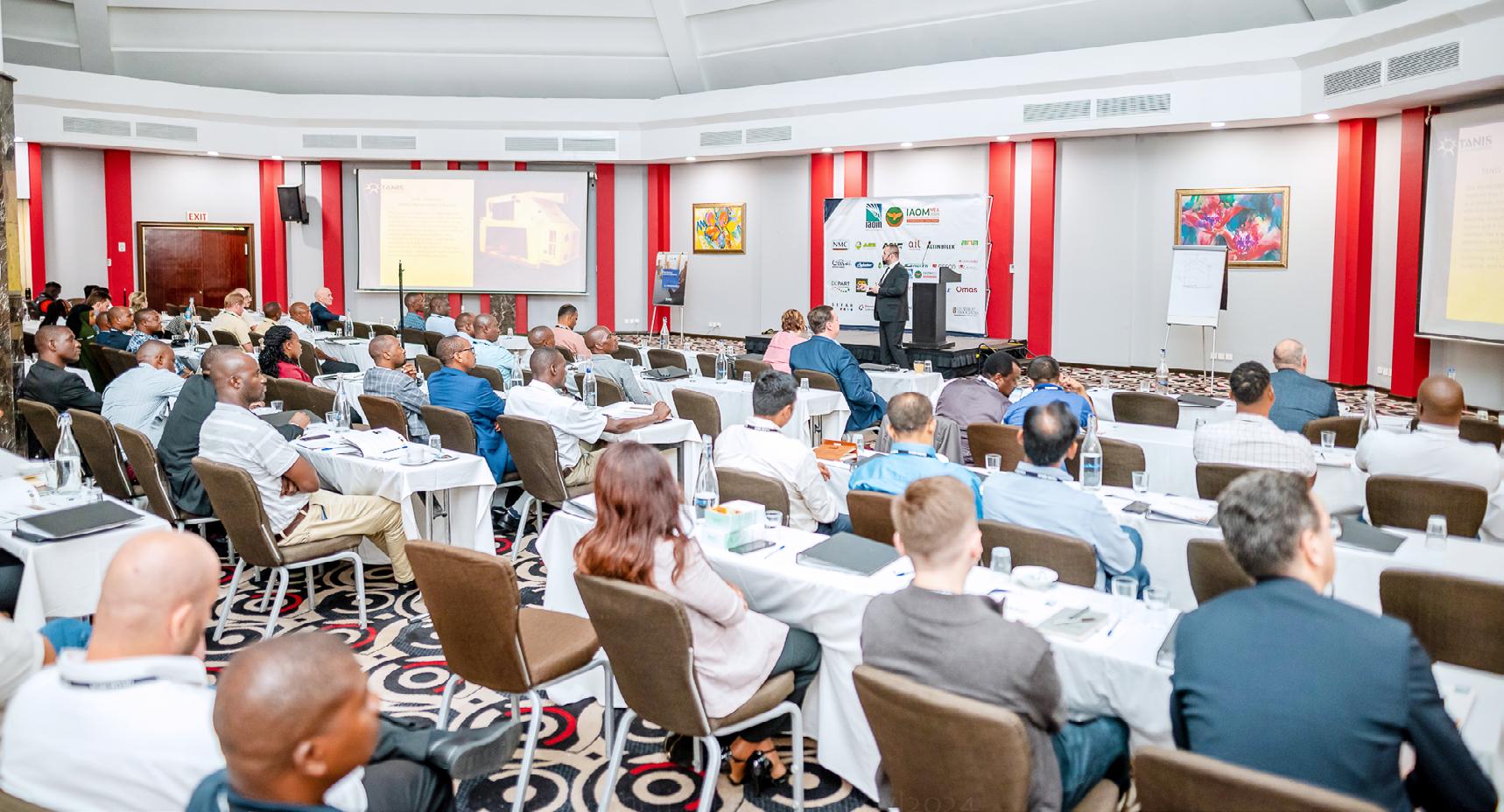
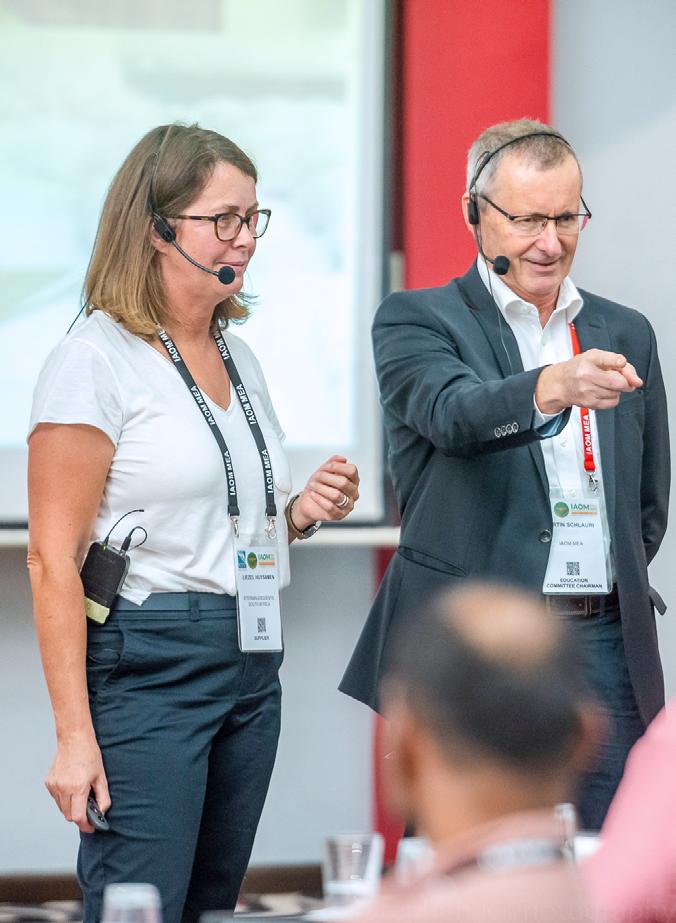
The International Association of Operative Millers Middle East and Africa Region (IAOM MEA) brought together technical millers from across sub-Saharan Africa for its recent Regional Forums program held in Lusaka, Zambia.
Under the banner of "Milling Operation for Ultimate Efficiency," the forum fostered a space for professional connection and knowledge exchange. Participants delved into the latest advancements and solutions showcased by leading international suppliers in the milling industry.
Among the noteworthy participants were Swiss technology giants Buhler, their Turkish counterparts Alapala, and flour improvement specialists Mühlenchemie.
The resounding success of the Zambia event has set the stage for the highly anticipated IAOM MEA 2024 Conference and Expo, scheduled for November 10-13 in Dubai, UAE.


FEB/MARCH 2024 | MILLING MIDDLE EAST & AFRICA WWW.MILLINGMEA.COM 30


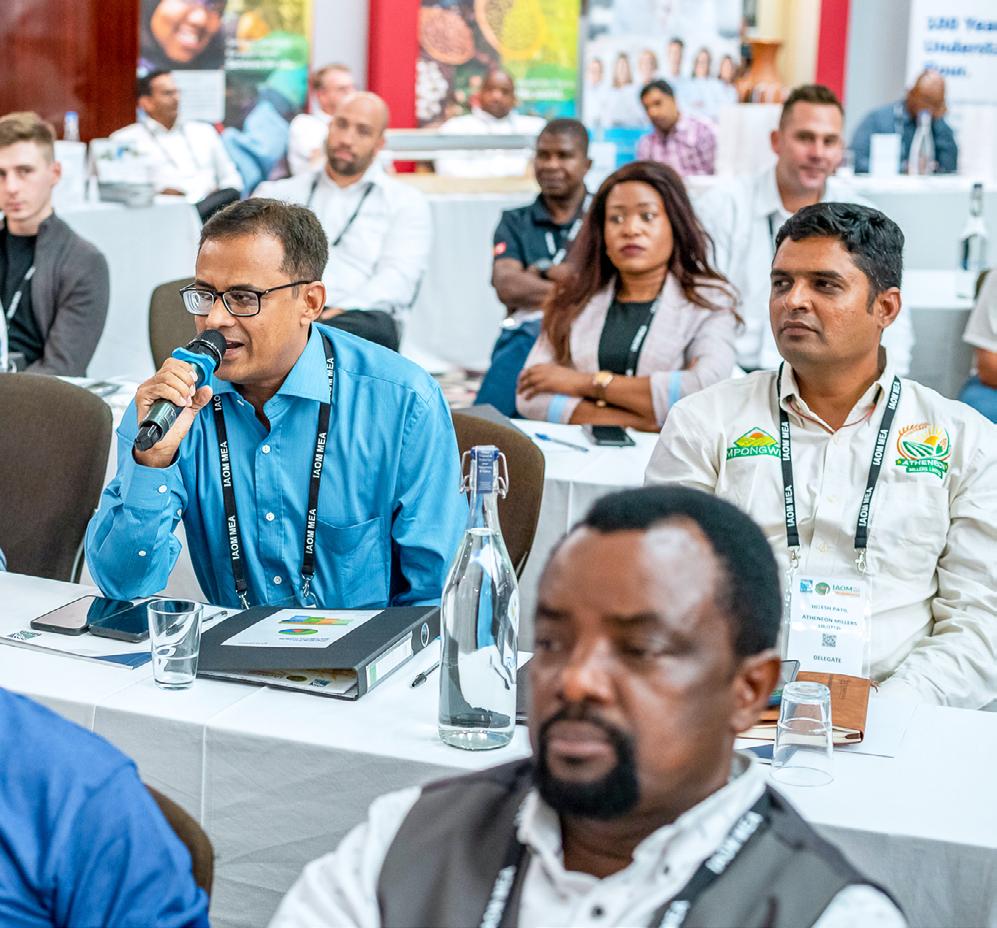
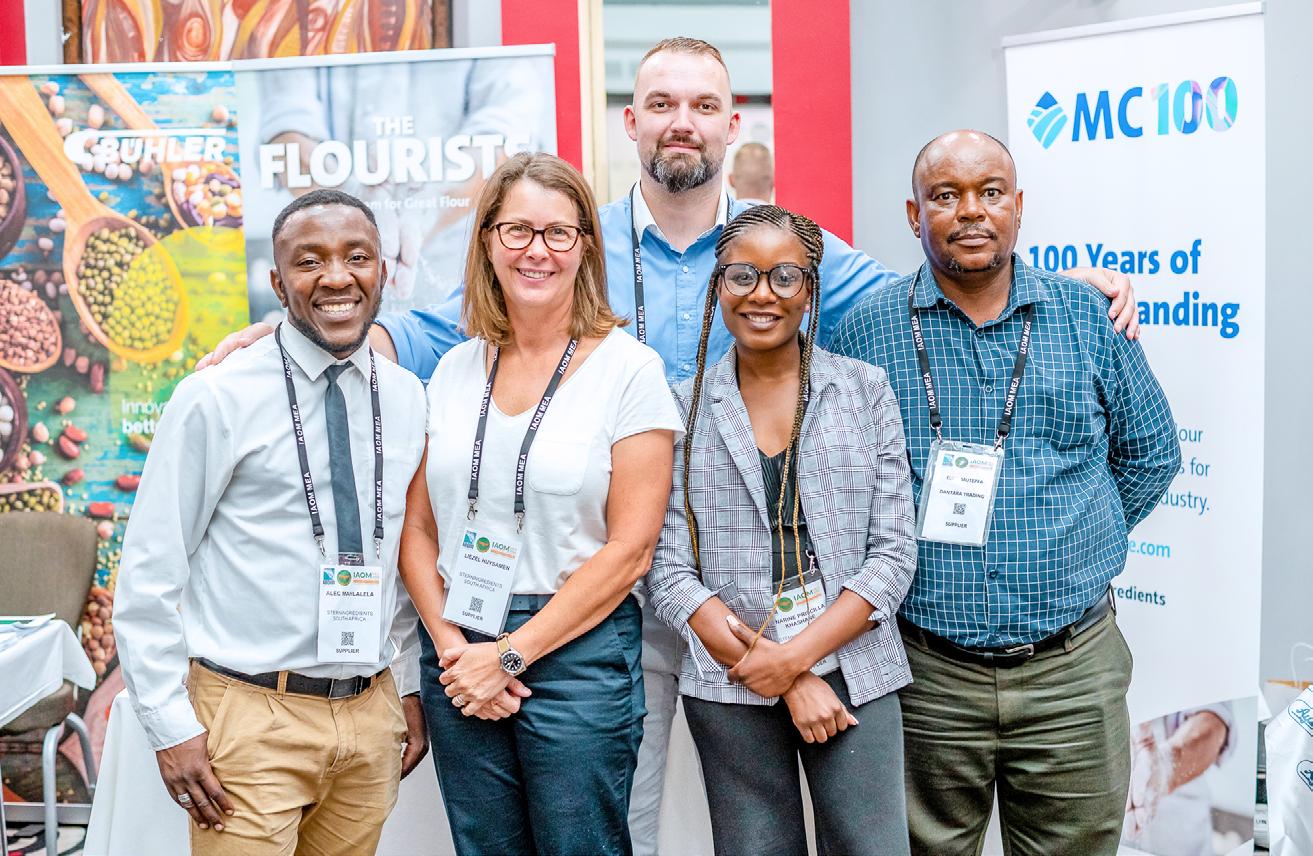


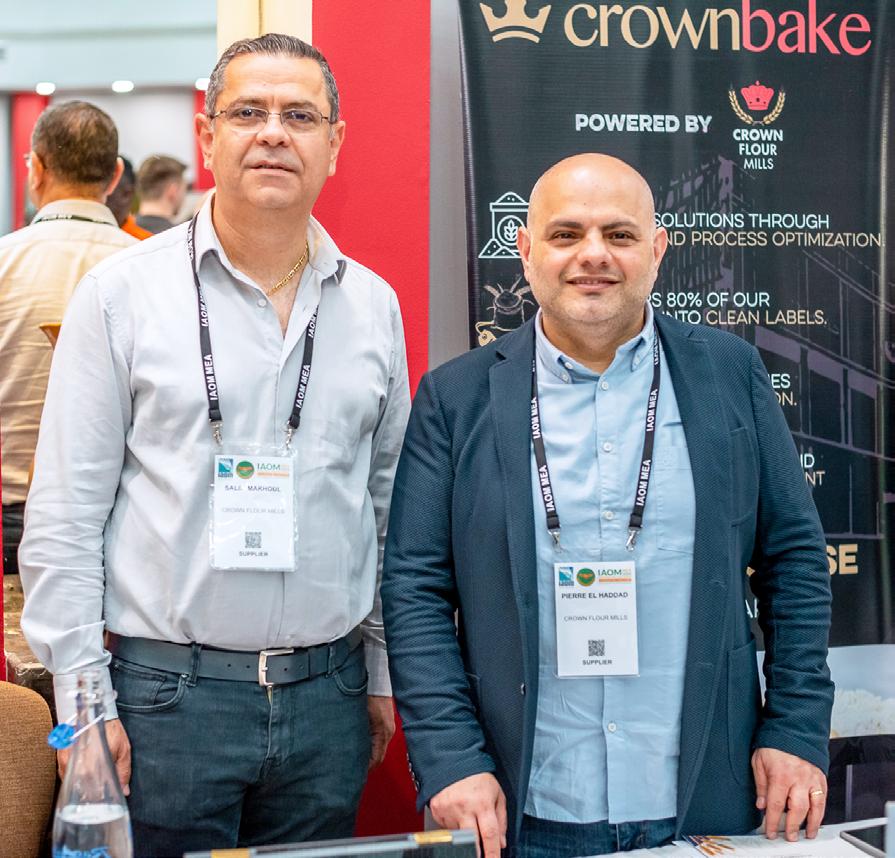

FEB/MARCH 2024 | MILLING MIDDLE EAST & AFRICA WWW.MILLINGMEA.COM 31
- 29 FEBRUARY
LUSAKA, ZAMBIA
27
2024,
MILLERS Corner



HARRISON OMEGA on the do's and dont's of FEED MILLING
MILLING MEA magazine sat down with Harrison Omega, a seasoned professional with nearly a decade of experience in feed milling. Currently serving as Process Supervisor - Feed Mill and Soy Extrusion Plant at Unga Group Limited, Omega shares his career journey, industry knowledge, and valuable advice for aspiring feed millers.
Could you briefly introduce yourself and share your experience in animal feed milling?
I'm a manufacturing production professional with close to ten years of hands-on experience overseeing production. I have a strong passion for animal nutrition and am enthusiastic about management and process control. My educational background includes a Bachelor of Science in Food Science and Technology, along with a Diploma in Purchasing and Supplies Management. Additionally, I've received training in Animal Nutrition and Feed Milling Technology from esteemed institutions like Penn State University, Buhler, and Cargill.
What initially drew you to the field of feed milling, and how did you develop your expertise?
My career began at Kenchic Co. Ltd., a chicken processing company. While there, I became curious about the feeding and handling of the broiler birds, particularly their diet and feed composition. This sparked a deep interest in working within the feed milling industry, leading me to pursue this career path.
Looking back, what would you consider the
most significant achievement or highlight of your career in feed milling?
I'm particularly proud of my time at Pioneer Feeds, where I joined the strategic team and contributed to a remarkable increase in production capacity. We went from producing 1,260 tons to 3,150 tons of feed per month. It was a journey filled with experimentation, challenges, and ultimately, rewarding successes. I was honored to support the company through various stages of growth.
In your current role at Unga Group Ltd., how do you ensure the smooth and efficient operation of the feed milling and soy extrusion process?
At Unga, we prioritize both food safety and customer focus. We're ISO-certified for Food Safety Management Systems (FSMS), and our team is deeply committed to exceeding customer expectations. Additionally,
BY WANGARI KAMAU
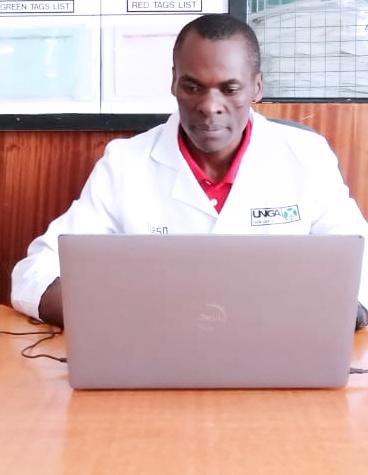
FEB/MARCH 2024 | MILLING MIDDLE EAST & AFRICA WWW.MILLINGMEA.COM 33
we utilize several methodologies to optimize operations, including TPM (Total Productive Maintenance), KANBAN, and KAIZEN, which promote continuous improvement.
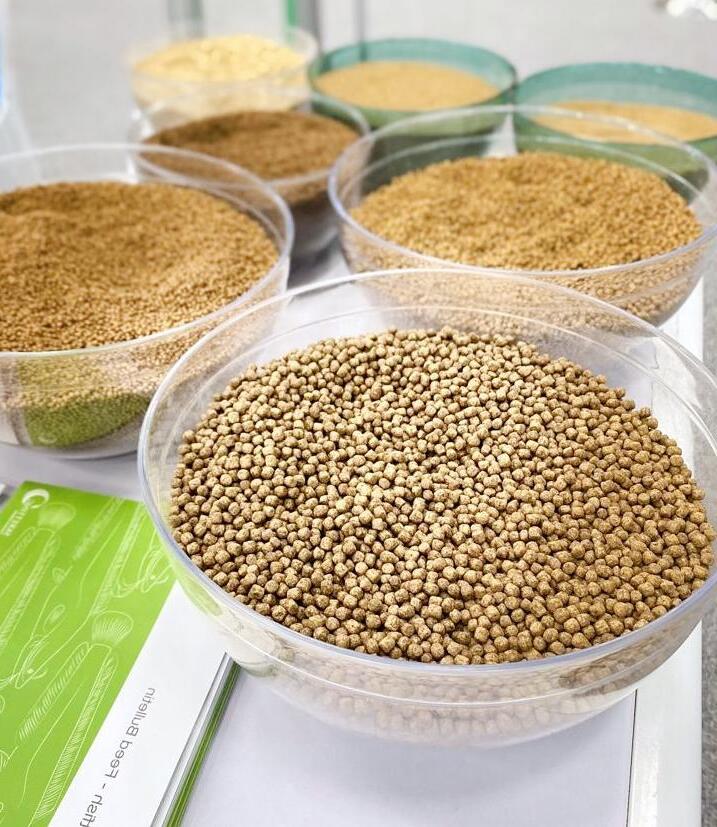
You mentioned the importance of a well-trained team. What specific measures do you take to ensure your team is prepared and empowered?
Investing in our people is crucial. Right from the start, our employees receive ongoing training in various areas, including production processes, health, safety, and environment (HSE) practices, quality control, and machine maintenance. Effective planning also plays a critical role. We meticulously plan for raw materials, manpower, machinery, and all other necessary inputs to ensure a smooth production run.
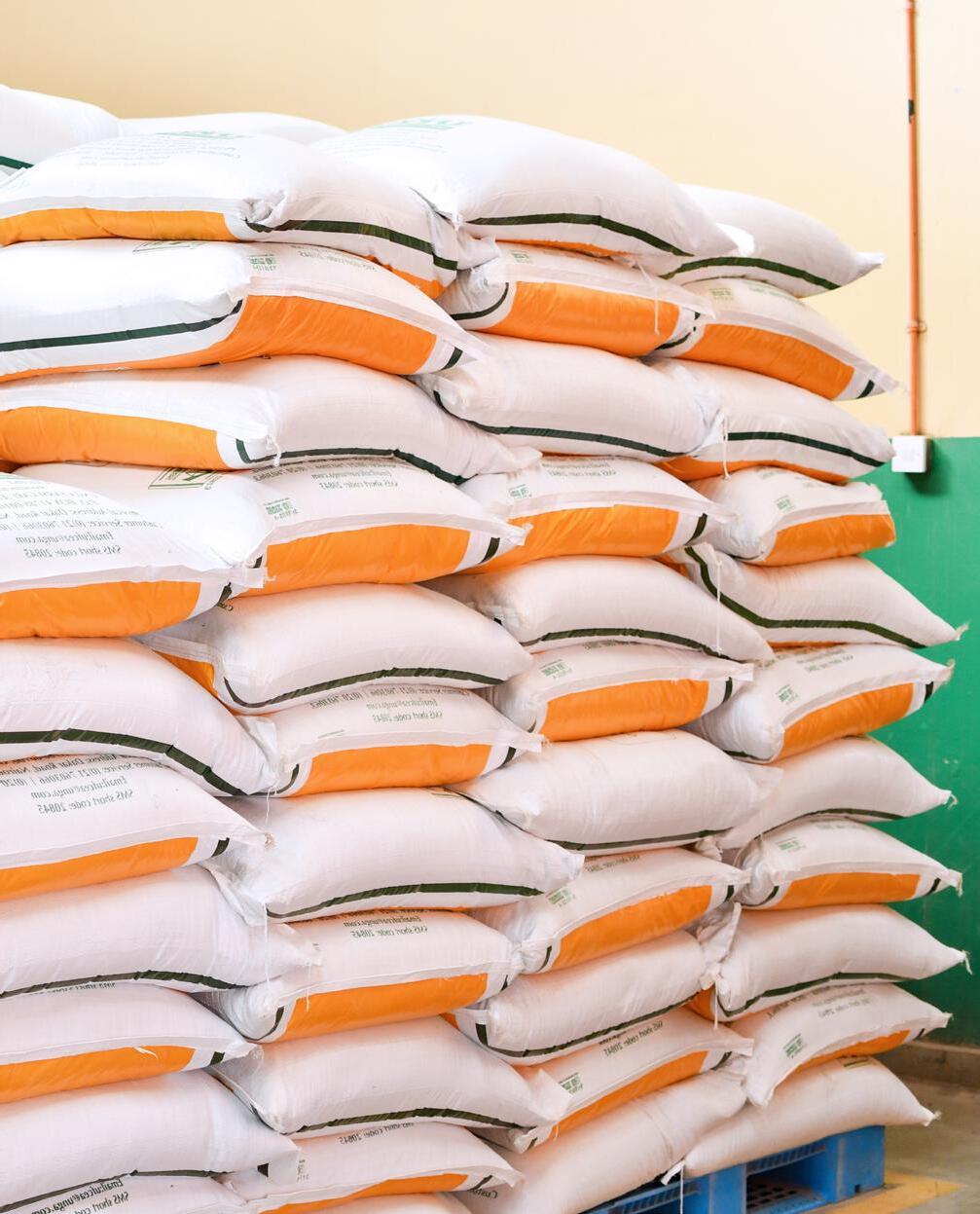
Finally, how do you foster a collaborative and supportive work environment at Unga?
We believe in open communication and continuous learning. Unga offers comprehensive training programs to equip our workforce with the necessary skills and knowledge to excel in their roles. I also encourage my team members to actively participate in the process by sharing their ideas for improvement and voicing any concerns they may have. This fosters a collaborative and supportive environment where
everyone feels valued and empowered to contribute.
Shifting gears, what are some of the biggest challenges facing the Kenyan feed milling industry currently?
Shortages of essential raw materials are a significant challenge. Kenya relies heavily on imports from neighboring countries, making the industry vulnerable to geopolitical situations and government policy changes. Additionally, fluctuating prices of commodities and high energy costs contribute to increased production costs and expensive final products.
How are these challenges being addressed?
The Kenya Feed Manufacturers Association (AKEFEMA) has lobbied the government for measures such as allowing the importation of key inputs like maize, albeit with certain restrictions. The government, through the Ministry of Agriculture, has also attempted to boost crop production through subsidies for farm inputs.
Looking ahead, what emerging trends or innovations do you see shaping the future of animal feed milling?
Process automation is becoming increasingly popular in Kenya, with feed millers embracing new technologies to enhance efficiency and product quality. We're also seeing faster methods like NIR (near infrared) and online quality testing equipment being adopted for raw materials and finished products.
How does Africa compare to the rest of the world when it comes to advancements in feed milling technology?
Europe, America, and some Asian countries are significantly ahead of Africa in milling technology. However, Africa is catching up by adopting existing technologies and knowledge from these regions. Government support for research and development, coupled with improved access to high-quality raw materials, is crucial for Africa to bridge the gap.
MMEA: With the growing global population and advancements in technology, how do you envision the future of the feed milling industry?
The future looks promising for the feed milling industry worldwide, driven by population growth and the constant evolution of knowledge and
FEB/MARCH 2024 | MILLING MIDDLE EAST & AFRICA WWW.MILLINGMEA.COM 34 MILLERS CORNER: HARRISON OMEGA
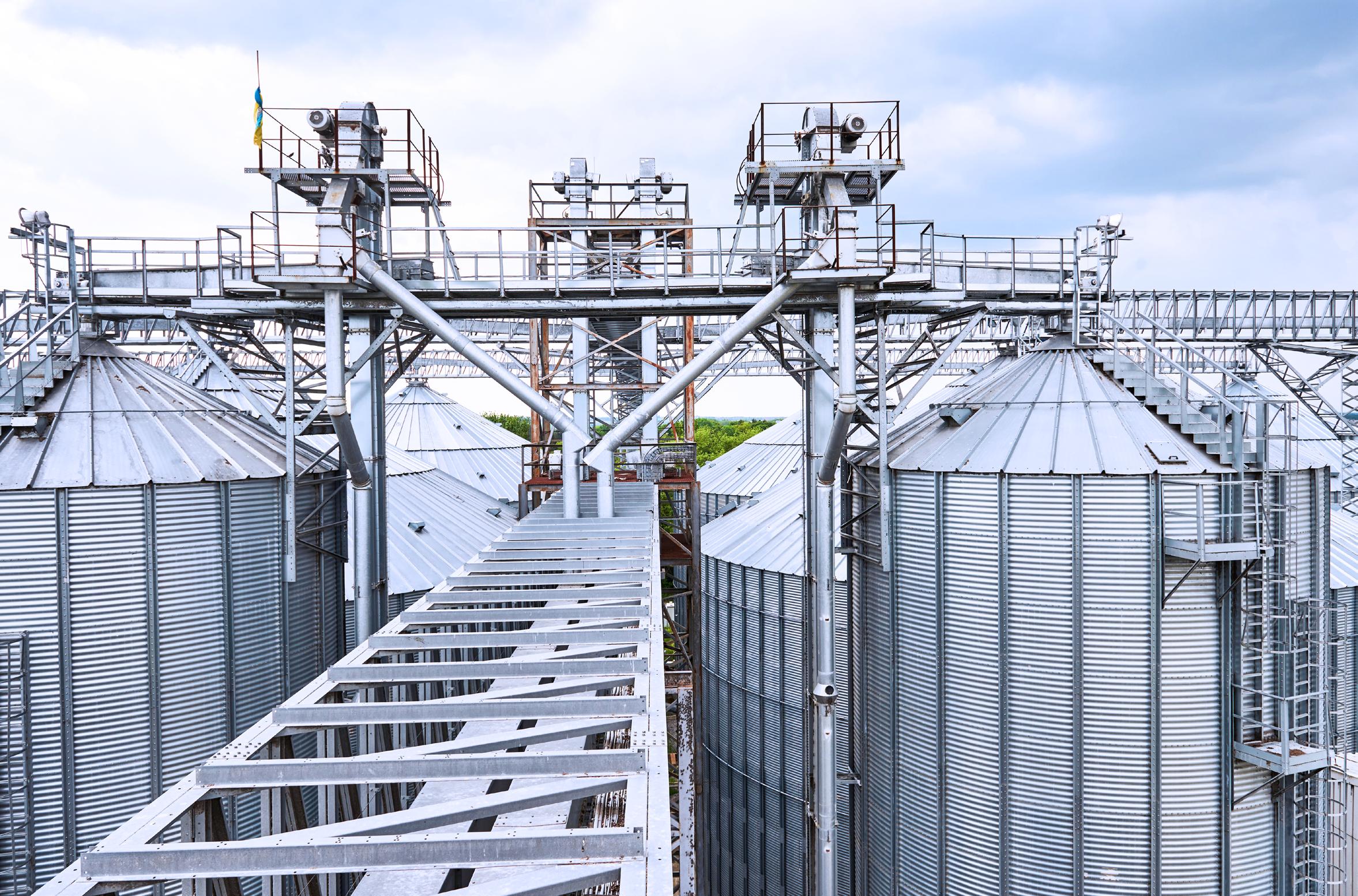
technology. We anticipate increased production in every country as the demand for animal feed continues to rise.
In the face of climate change, how can the animal feed industry contribute to a sustainable future?
Embracing renewable energy sources like wind, solar, and geothermal power can significantly reduce production costs and environmental impact for feed producers in Kenya and Africa. Additionally, industry bodies like AKEFEMA can implement policies that encourage companies to undertake Corporate Social Responsibility (CSR) projects focused on environmental preservation, such as tree planting initiatives.
Looking back on your career, have you faced any setbacks or failures that ultimately proved to be valuable learning experiences?
While not necessarily setbacks, my career has been filled with learning opportunities. I've gained a deep understanding of the essential systems and components that ensure a profitable feed mill operation. The importance of appreciating customer feedback and taking prompt action to address concerns has also been an invaluable lesson. Through these experiences, I've learned the essential "dos and don'ts" of the feed milling industry.
As you look towards the future of your career, what are your aspirations, and what potential opportunities or challenges do you foresee in the animal feed industry?
The feed milling industry offers numerous exciting opportunities worldwide, including roles in research,
TO SUCCEED IN FEED MILLING, PRIORITIZING QUALITY AND CONSISTENCY IS PARAMOUNT. ADDITIONALLY, FEED MILLERS MUST BE PREPARED TO CONTINUOUSLY LEARN AND ADAPT TO STAY AHEAD OF COMPETITION.
nutrition, and technical management. My aspiration is to one day become a Feed Mill Plant Manager, either domestically or internationally. In this role, I would be responsible for overseeing daily operations, managing challenges, and staying updated on the ever-evolving technological landscape of the industry.
Finally, what advice would you offer aspiring feed milling professionals looking to make their mark in the industry? To succeed in feed milling, prioritizing quality and consistency is paramount. Customers value consistency in product quality, and remember, quality starts from the moment you source raw materials and continues until the final product is fed to the animals, yielding the desired results. Additionally, feed millers must be prepared to continuously learn and adapt to stay ahead of the competition.
FEB/MARCH 2024 | MILLING MIDDLE EAST & AFRICA WWW.MILLINGMEA.COM 35
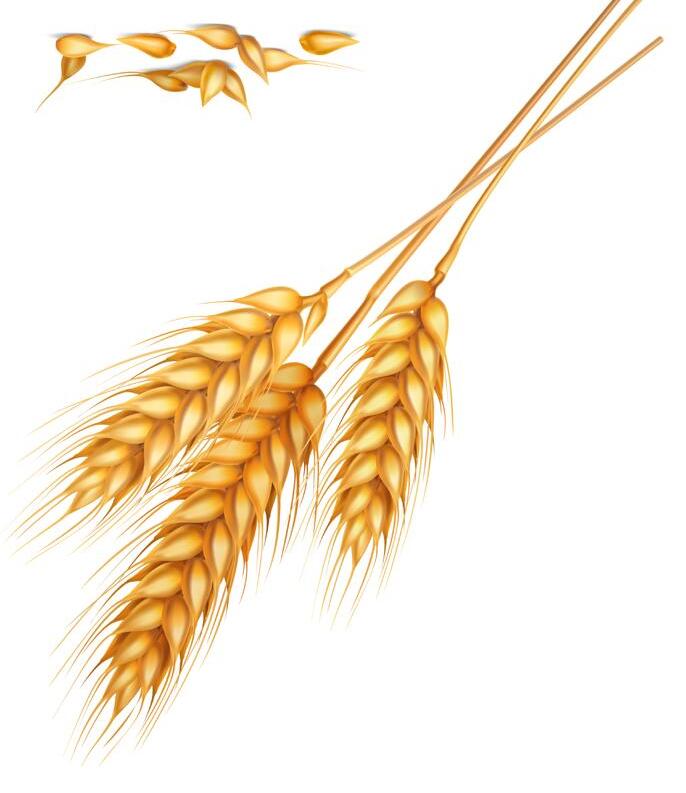 BY MARTHA KURIA
BY MARTHA KURIA
MOROCCO
Persistent drought threatens food security prospects
The Kingdom of Morocco, known as the Maghreb or the “Arab West”, boasts a rich culture with Arab, Berber, European, and African influences. It is located in North Western Africa. The country borders Algeria to the East and South-East and Mauritania to the South-West. As in many other developing countries, the agricultural sector is a key economic engine within the country and is highly dependent on often-limited rainfall.
Agricultural lands span across 8.7 million hectares in our region. Approximately 43% of arable land is dedicated to cereals, with 7% allocated to plantation crops such as olives,
almonds, citrus fruits, grapes, and dates. Among cereals, common wheat comprises nearly 47% of the gross value, followed by durum wheat (27%), barley (23%), maize (2%), and other cereals like sorghum and rice (1%).
Notably, 90% of cereal acreage is situated in rainfed areas. Thus their output is highly variable year-on-year depending on rainfall amounts and distribution. Out of the past five agricultural seasons, four were affected by drought with different degrees of intensity. This has had an outsized impact on Morocco’s grain and feed industry which has had to rely on imports to meet local demand. As far as imports and trade is concerned, The European Union is

FEB/MARCH 2024 | MILLING MIDDLE EAST & AFRICA WWW.MILLINGMEA.COM 36
COUNTRY FOCUS: MOROCCO











Morocco’s primary trading partner, accounting for about 60% of Morocco’s agricultural exports.
WHEAT OCCUPIES A CENTRAL ROLE IN MOROCCAN DIETS
Wheat is an important cereal crop in Morocco, contributing significantly to the livelihoods of farming communities and the national economy. Wheat stands as a crucial food staple in the Moroccan diet. According to the "Fédération Nationale de la Minoterie" (FNM), the average per capita wheat consumption in Morocco is 200 kg, which is three times higher than the global average.
Soft wheat is the most important cereal grown in Morocco, accounting for 45-47% of the total cereal growing area. When combined with durum wheat, wheat is by far the country’s most important crop, covering 2.9 million hectares (65 percent of the total cereal growing area). According to estimates from Government of Morocco, the country produced 2.98 MMT of common wheat, 1.18 MMT of durum wheat in 2023.
The government supports wheat production through the establishment of a reference price for purchasing local production. The government achieves this by applying tariffs on wheat imports to protect local producers from international competition and revising the duties periodically depending on the domestic supply and demand situation. Usually, import duties are set at the highest levels at harvest time. The government also provides a storage premium to farmers who decide to store wheat grain in licensed facilities.
In Morocco, wheat, flour, and bread prices are tightly regulated. The country entrusts the National Inter-Professional Office for Cereals and Legumes (ONICL) with the responsibility
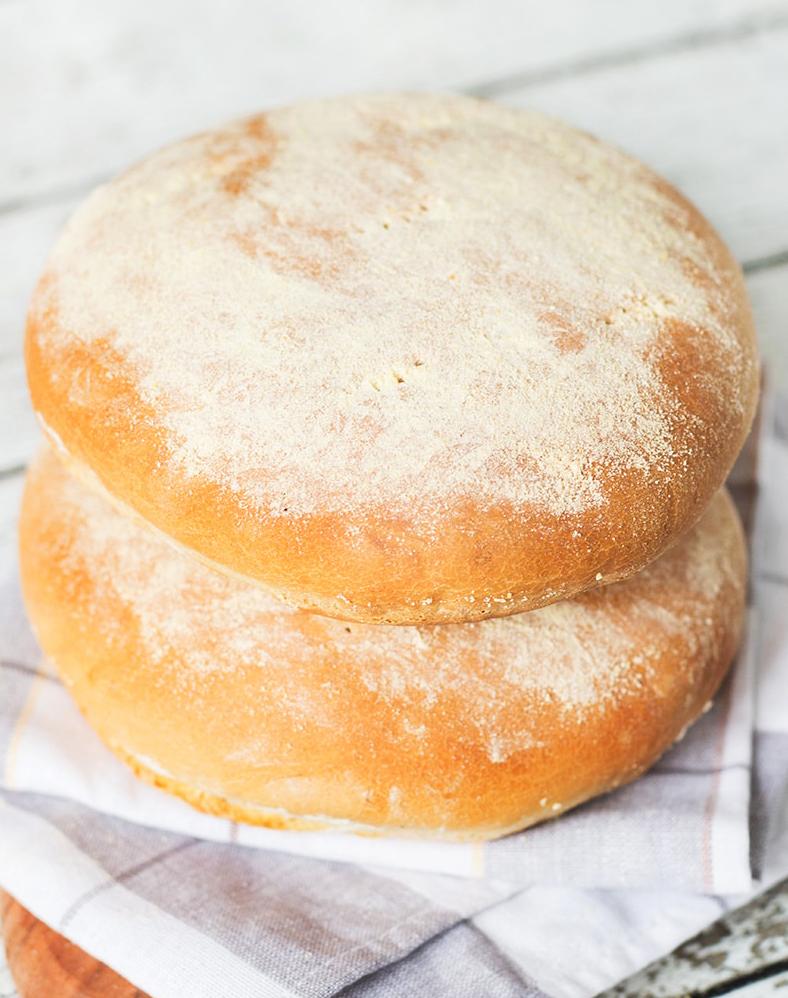
of overseeing prices. Their mandate includes maintaining bread wheat prices within the range of US$260/MT to $280/ MT.
FEB/MARCH 2024 | MILLING MIDDLE EAST & AFRICA WWW.MILLINGMEA.COM 37
6934 5116 2731 7091 7342 4025 2870 7540 3800 2700 2013 2014 2015 2016 2017 2018 2019 2020 2021 2022 2023 9000 8000 7000 6000 5000 4000 3000 2000 1000 0 Year Production (1000MT) MOROCCO WHEAT PRODUCTION BY YEAR (2013-2023)
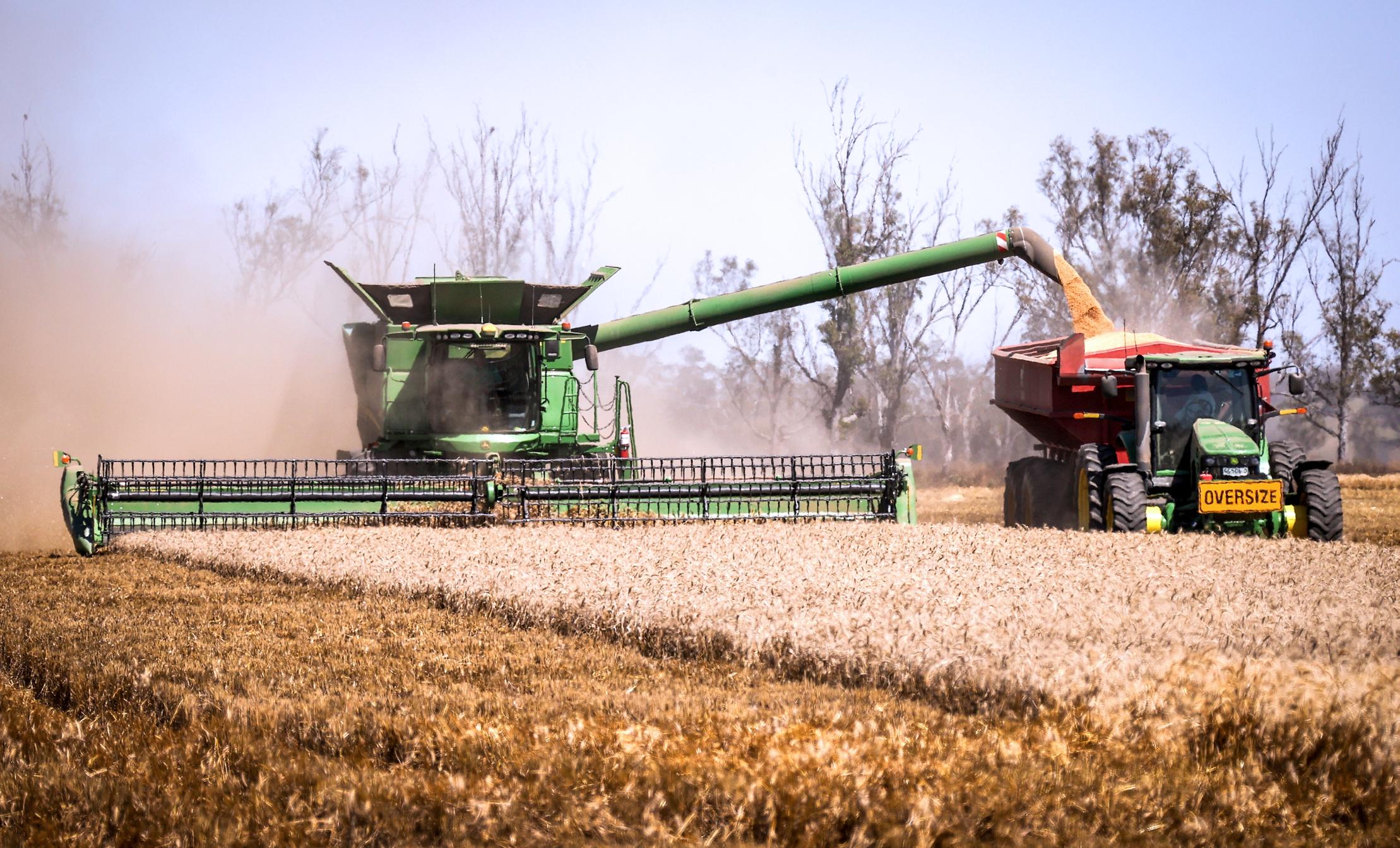
Wheat is the most planted cereal in Morocco covering 2.9M hectares
IN NUMBERS
153
NUMBER
ONICL subsidizes common wheat flour, “National Flour,” to preserve the purchasing power of low-income consumers. The 2020 edition of the annual report on the flour milling sector published by Fédération Nationale de la Minoterie (FNM), Morocco’s milling industry association, puts the number of industrial mills processing soft wheat in the country at 125, with a further 20 milling durum and eight producing barley flour.
At the end of 2019, the country had 11 million metric tonnes (MMT) of grain processing capacity, 85% of which was used for soft wheat. The amounts processed in 2019 were 4.4 MMT of soft wheat, 900,000 tonnes of durum and 830,000 tonnes of barley.
Due to the excess milling capacity in the country and the goodwill from the government, some quantities of wheat flour, couscous and pasta are exported to neighboring countries.
DEVASTATING WEATHER CONDITIONS
DROVE MOROCCO’S WHEAT IMPORT TO A RECORD HIGH
Wheat constitutes about 60 percent of the cereal imports in Morocco. The country ranks as is one of the top global wheat importers and Africa’s third-largest wheat importer, averaging imports
of 3 million tonnes of soft wheat a year for the last 10 years. In 2022, the country endured its most severe drought in decades, resulting in a 60% decline in cereal production compared to the previous year and a 45% decrease from the preceding five-year average. According to USDA data, production plummeted from 7.54 MMT in 2021/2022 to 2.7 MMT in 2022/2023, marking a staggering 64% drop.
The decline in grain production has triggered a sharp rise in imports. Official USDA data reveals that Moroccan wheat imports surged from 4.726 MMT in 2021/2022 to 6.5 MMT in 2022/2023. Although production in MY2023/24 is anticipated to rebound to 3.8 MMT, it remains considerably below pre-2022/2023 drought levels. Consequently, the USDA forecasts wheat imports to escalate to 7.5 MMT in 2024.
To address local demand, Morocco initiated an import program for the 2023/24 season, covering up to 2.5 million tons from July to September, followed by a second phase permitting up to 2 million tons from October to December. Phase 3 to support imports of 2.5 million MT of common wheat was rolled out in December. This initiative aims to support importers by covering the difference between the cost of wheat and the reference import price of 270 MAD ≈ $263 per
FEB/MARCH 2024 | MILLING MIDDLE EAST & AFRICA WWW.MILLINGMEA.COM 38
OF FLOUR MILLING COMPANIES IN MOROCCO.
COUNTRY FOCUS: MOROCCO
MT. According to USDA, the program will mainly benefit Moroccan importers looking to source wheat from, Germany, Argentina, France and the United States and is valid from January 1st, 2024, until April 30th, 2024.
Morocco’s import support program is intended to maintain low bread prices in the local market and encourage stock building, according to the USDA. Overall, FAS estimates MY 2023/24 consumption at 10.65 MMT, equivalent to 288 kg per capita based on a population of 36.3 million.
MOROCCO SHIFTS TO THE EU FOR WHEAT
Ukraine and Russia have traditionally accounted for 20% and 7% respectively of Morocco's wheat supply in recent years. However, supply disruptions from these countries in 2022 led to imports from these countries falling to below 1% of total exports. This coincided with the worst drought season in three decades, exerting immense pressure on Morocco’s wheat supply, and prompting the country to boost imports from partners such as France.
According to the European Commission's 2023 report, Morocco remains the largest importer of wheat from the EU for the 2022/2023 agricultural campaign. The report highlights that during the first four months of
2023, Morocco imported over 4 MMT of wheat, a significant increase from 1.4 MMT the previous year.
Data from Gro Intelligence reveals that between June 2022 and January 2023, Morocco imported 3.2 MMT of soft wheat alone. Of these imports, nearly 70%, totaling 9.16 MMT, originated from France, followed by Romania with 3.49 MMT, Germany with 3.12 MMT, Poland with 2.54 MMT, and Lithuania with 2.26 MMT.
MOROCCO DETHRONED AS THE MAJOR BARLEY PRODUCER IN AFRICA
For decades, Morocco has maintained its position as the top barley producer in Africa. In the 2021/2022 marketing year, Morocco emerged as the largest barley producer, harvesting 2,780,000 metric tons across 1,490,000 hectares of planted area.
Changing weather patterns have however devastated the sector, leading a downward trend in production. In the 2022/23 marketing year, production plummeted to only 700,000 metric tons, marking a 78% decrease from 202122 levels. This decline in production relegated Morocco from its leading position to third place, behind Ethiopia (2.18 million metric tons) and Algeria (1.6 million metric tons), in barley
MOROCCO IS FORECAST TO CONSUME 10.65MMT OF WHEAT IN MY2023/24, EQUIVALENT TO 288KG PER CAPITA BASED ON A POPULATION OF 36.3 MILLION.
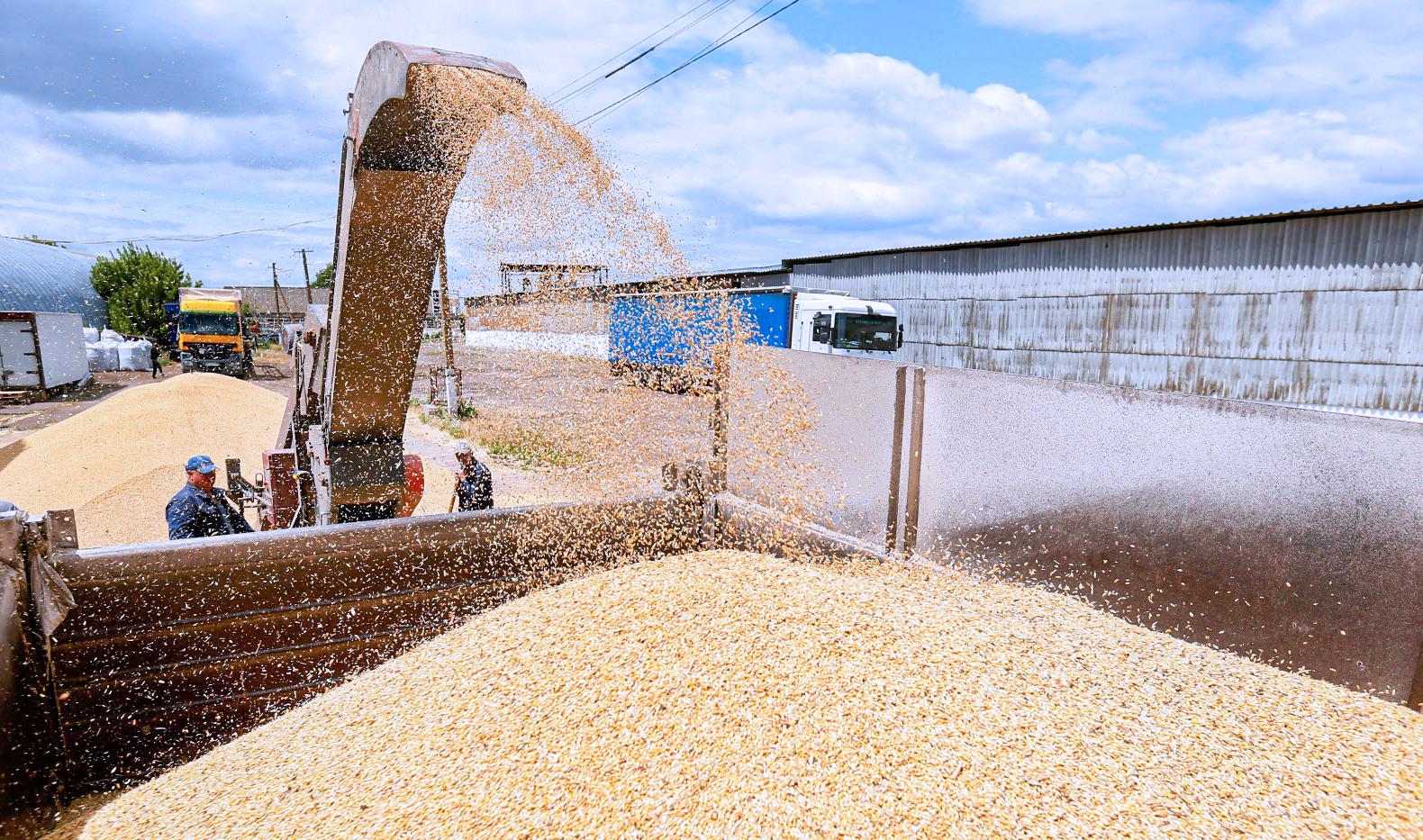
FEB/MARCH 2024 | MILLING MIDDLE EAST & AFRICA WWW.MILLINGMEA.COM 39

production.
2.3MMT
MOROCCO CORN IMPORT ESTMATES FOR 2023.
Production is primarily directed towards animal feed, with a smaller portion allocated for human consumption. According to USDA, the utilization rates for human food and animal feed vary based on local availability and pasture conditions. Consumption peaks during dry years and declines during seasons with ample rainfall, when wheat becomes more predominant, notes the US agricultural agency. For MY 2023/24, USDA forecasts total barley consumption at 1.7 MMT.
Most of the local demand will be satisfied by domestic production, estimated by USDA at 1.1 MMT from approximately 1.2 million hectares of land. The country is also expected to import around 700,000 tonnes of barley to address the
shortfall, primarily from the EU27 region, which accounts for over half of Morocco’s imports. Ukraine and Russia serve as the other two major barley exporters to Morocco.
POULTRY DRIVES CORN IMPORT MARKET
Morocco is not a major producer of corn. According to the most recent USDA data, Morocco produced about 115,000 tons of maize in 2022, reflecting a 4% decline compared to the previous year. Nonetheless, the country maintains a substantial demand for corn, primarily driven by its animal feed sector. The poultry and dairy industries stand as the primary consumers of imported corn.
In 2023, the country is estimated to have imported approximately 2.3 million metric tons (MMT) of corn. Argentinean and Brazilian corn imports dominated the market, capturing a 90% share, as reported by the USDA. US corn held the third position with a 7% market share. However, the US emerges as the leading supplier of corn co-products to Morocco, commanding an 83% market share, followed by Argentina at 13%, and the Netherlands at 6%.
The US Grain Council anticipates a future increase in corn imports as the poultry industry, the largest single consumer of corn, rebounds in response to the recovering economy.
A FIRSTHAND EXPERIENCE WITH CLIMATE CHANGE
As reiterated earlier, climate change poses the most significant threat to Morocco's agriculture and the nation's food security aspirations. In December of last year, Morocco's Minister of Equipment and Water, Nizar Baraka, disclosed that the Kingdom is bracing for its sixth consecutive year of drought due to decreased rainfall in recent months.
During that period, rainfall dwindled by 67% in the three months spanning October to December compared to a year considered normal. With rainfall scarce, the North African country's reservoirs are presently only 23.5% full, a stark contrast to the 31% recorded at the same juncture last year, a situation Mr. Baraka deemed "very dangerous."
The diminished rainfall accounts for the country's reduced agricultural output, jeopardizing the livelihoods of a third of the working-age population reliant on agriculture.
In response to escalating water stress, authorities are pinning hopes on seawater desalination projects, including one slated to

FEB/MARCH 2024 | MILLING MIDDLE EAST & AFRICA WWW.MILLINGMEA.COM 40
IN NUMBERS
COUNTRY FOCUS: MOROCCO
Morocco produced 115,000 tons of maize in 2022.


MT) for grain traders and Moroccan agricultural cooperatives. This premium is provided to facilitate the storage of wheat at facilities licensed by the Moroccan Cereals Office (ONICL).
On May 31, 2023, the Moroccan government ceased its common wheat import support program as global prices decreased with the emergence of the new world wheat crop (ranging between $227-$251 per MT), coupled with other diminishing inflationary pressures. Furthermore, the government of Morocco maintained wheat and barley import duties at zero until December 31, 2023, in a bid to encourage
One of the most ambitious initiatives is the launch of a US$1 billion plan in June 2023 to mitigate the impacts of drought on the agricultural sector. This comprehensive plan includes support for livestock, horticultural production, and the enhancement of agricultural financing systems. Of the total funds, $500 million will be allocated to a subsidy program for imported barley and dairy cattle feed, $400 million will be utilized to facilitate the purchase and distribution of inputs such as seeds and fertilizers, while the remaining $100 million will be dedicated to supporting Credit Agricole and improving
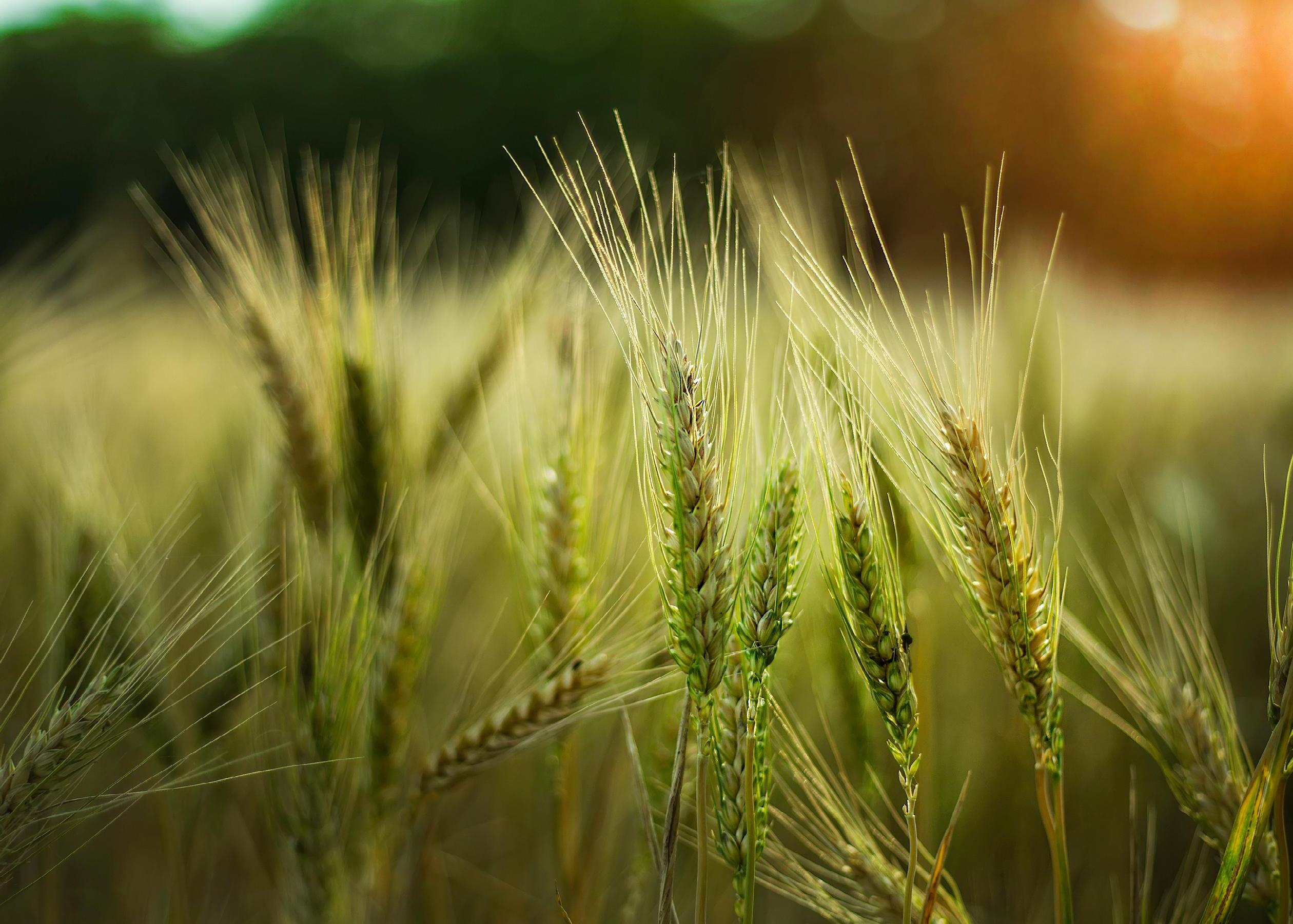





SIGN UP FOR MILLING MIDDLE EAST & AFRICA EMAIL NEWSLETTERS! www.millingmea.com/signup
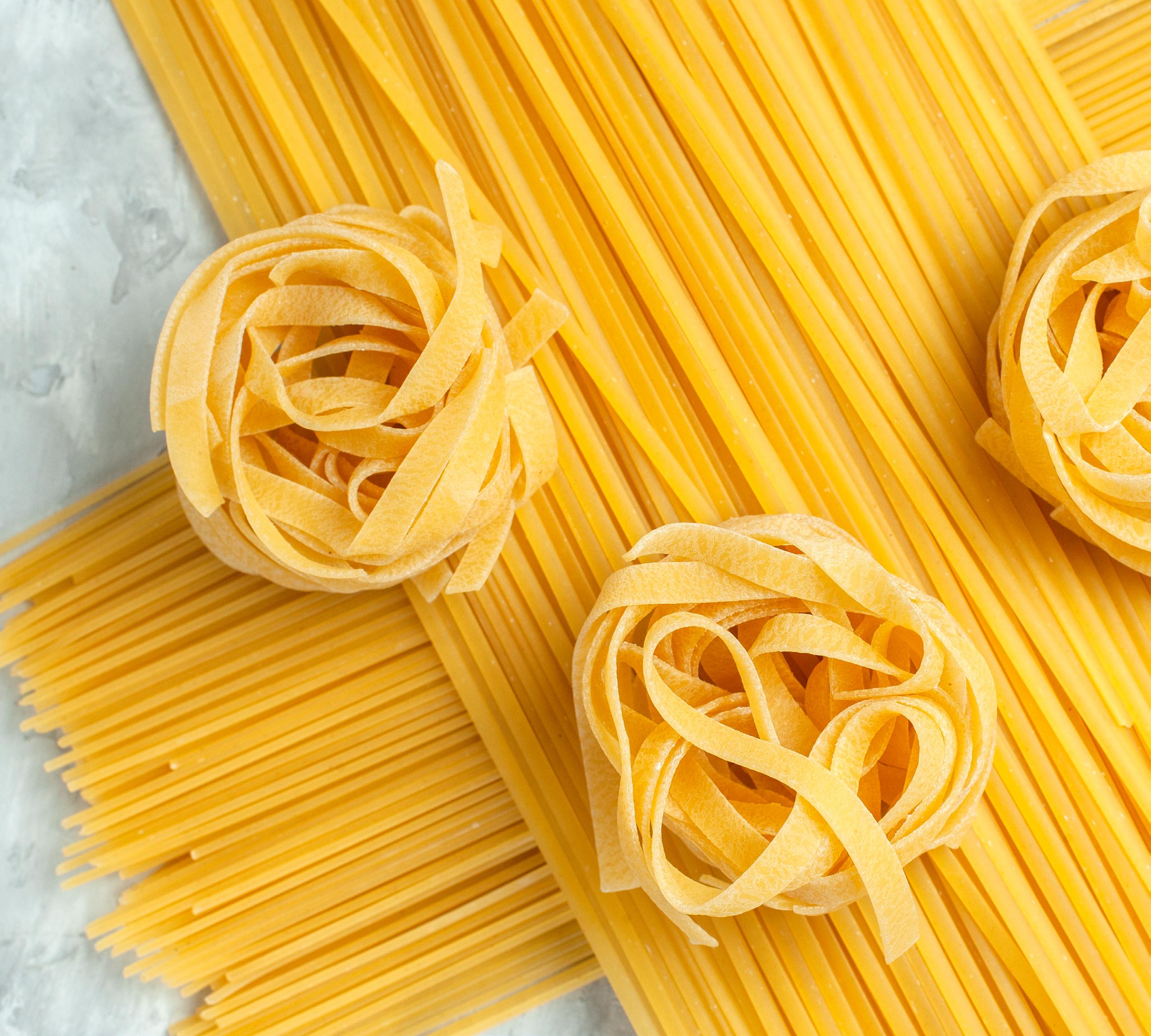
EXTRUSION
Extrusion, the decades old technology driving new product development in thee 21st century
BY MARTHA KURIA
Over the past 80 years, the application of continuous extrusion, which was initially limited to mixing and forming macaroni and ready-to-eat cereal pellets is now considered a high temperature-short time bioreactor that transforms raw ingredients into modified intermediate and finished products. The technology has been developed as an alternative method for texturization, mixing, forming, reacting, and cooking of food.
According to Market Research Future, extruded snacks market size was valued at US$
44.3 billion in 2022 and is projected to grow from US$ 47.4 Billion in 2023 to US$ 72.0 billion by 2030, exhibiting a compound annual growth rate (CAGR) of 7.20% during the forecast period (2023 - 2030). The rapidly evolving snacks industry has created new opportunities for manufacturers to innovate their processing and preservation technologies, as well as their modern product offerings. The extruded category has entered the mainstream, and the market is experiencing a variety of trends, from pasta, breakfast cereals, bread crumbs, biscuits, crackers, croutons, baby foods, snack foods, confectionery items, chewing
FEB/MARCH 2024 | MILLING MIDDLE EAST & AFRICA WWW.MILLINGMEA.COM 42 TECHNOLOGY FOCUS: EXTRUSION
gum, texturized vegetable protein, modified starch, pet foods, dried soups, and dry beverage mixes.
BASIC PRINCIPLE OF EXTRUSION PROCESS
Extrusion is a high-temperature–short-time (HTST) cooking process in which heat transfer, mass transfer, pressure changes, and shear are combined to achieve structural, chemical, and nutritional transformations.
During extrusion, raw materials are forced to flow under controlled conditions along the length of the extruder barrel and through a shaped opening (called die assembly) at a defined throughput. First, raw materials are commonly ground to the preferred particle size. While food is being forced through the extruder, foods are cooked in the high-pressure, high-shear, and high-temperature environment created by the screws, encased in the barrel.
The expected results can be starch gelatinization and degradation, protein denaturalization, lipid oxidation, degradation of vitamins, antinutritional and phytochemicals compounds, formation of flavors, increase of mineral bioavailability, and dietary fiber solubility.
Extrusion cooking is becoming popular over other common processing methods in food processing due to its automated control, high capacity, continuous operation, high productivity,
versatility, adaptability, energy efficiency, and low cost. Moreover, it also enables the design and development of new food products, high product quality, unique product shapes and characteristics, energy savings, and no effluent generation.
The extruder assembly is composed of a closed barrel enclosing screw(s), die, and cutter at the end of the die. The screw is the central part of an extruder that rotates in a grooved cylindrical barrel, made from hard alloys or hardened stainless steel to withstand frictional wear. In food industries, three major types of extruders are used, namely piston extruders, roller-type extruders, and screw extruders. However, most extruded food manufacturers prefer screw extruders, either single or twin-screw extruders.
PASTA PRODUCTION
Among the single-screw extruders, the coldforming (Pasta-type) extruder is generally used for forming various types or shapes of pasta or pasta-like products from high-moisture dough. It involves kneading of the dough to deliver uniform, kneaded, and mixed dough at die without the addition of external thermal energy. Pastas are generally wheat-based products that are formed from dough, where no leavening is necessary. Durum semolina is the best material for making flour for pasta, responsible for giving its yellow color.
AMONG THE SINGLESCREW EXTRUDER IS GENERALLY USED FOR FORMING VARIOUS TYPES OR SHAPES OF PASTA OR PASTA-LIKE PRODUCTS FROM HIGHMOISTURE DOUGH.

FEB/MARCH 2024 | MILLING MIDDLE EAST & AFRICA WWW.MILLINGMEA.COM 43
The extrusion parameters of the pasta, i.e., humidity, temperature, pressure, and speed, affect the final quality of the product, both due to the thermal rise of the pasta and the changes in the protein lattice. The hot (48-50°C) and soft (2933% water) dough is hit by a flow of hot air, which creates the so-called wrapping and prevents the products from becoming sticky. The final moisture content of the dough must be less than 12.5%
Across many countries around the World, pasta is an appreciated staple food. In 2022, pasta consumption per capita varied significantly across countries. Italy topped the list, with its citizens consuming an average of 23 kilograms of pasta annually which corresponds to a total production of 3,890,467 tonnes of product. Tunisia ranked second with a per capita consumption of 17 kilograms, the highest in Africa, according to Statista. However, in Kenya, the consumption of pasta still lags, with the average volume per person in the pasta market expected to amount to 3.3kg in 2024.
EXTRUDED SNACKS
Extruded snacks are among the most commercially successful snack foods. This popularity and growth inspire manufacturers to constantly turn out new products to entice consumers. Their production includes subjecting selected cornmeal, rice, potato, or other grains through an extruder under high pressure and heat. The mixture is then shaped into various forms, such as curls, twists, or puffs, and cut into
Extruded snacks come in three categories, firstgeneration snacks (simply extruded), second-generation snacks (expanded snacks), and third-generation snacks (halfproducts or pellets), depending on the expected final product. In the first generation, the raw material, such as whole grains, is processed through the combination of moisture, cooking temperature, and drying. However, in the second and third generations, snacks are produced by thermoplastic extrusion.
Recently extrusion technology has enabled the development of third-generation food products, known as "half products," a multidimensional product that are extruded and later puffed, popped, or fried, providing new textures and eating experiences to consumers. Co-extrusion involves extruding a hollow tube of cereal while simultaneously injecting lowmoisture cream or paste fillings into the center. These new products are marketed as bar-sized premium snacks with contrasting or complementary fillings, such as chocolate and orange, cream, chili and salsa, and much more.
Extruded snacks can be flavored with various seasonings such as cheese, barbecue, sour cream, and onion, or spicy flavors, making them popular for their crunchy texture and a wide variety of shapes, sizes, and flavors. According to an industry report, the global extruded snacks market is projected to grow from $53.20 billion in 2022 to $77.72 billion by 2029, at a CAGR of 5.57%.
Despite the projected growth in the market, a report by IMARC Group, revealed that the Middle East and African
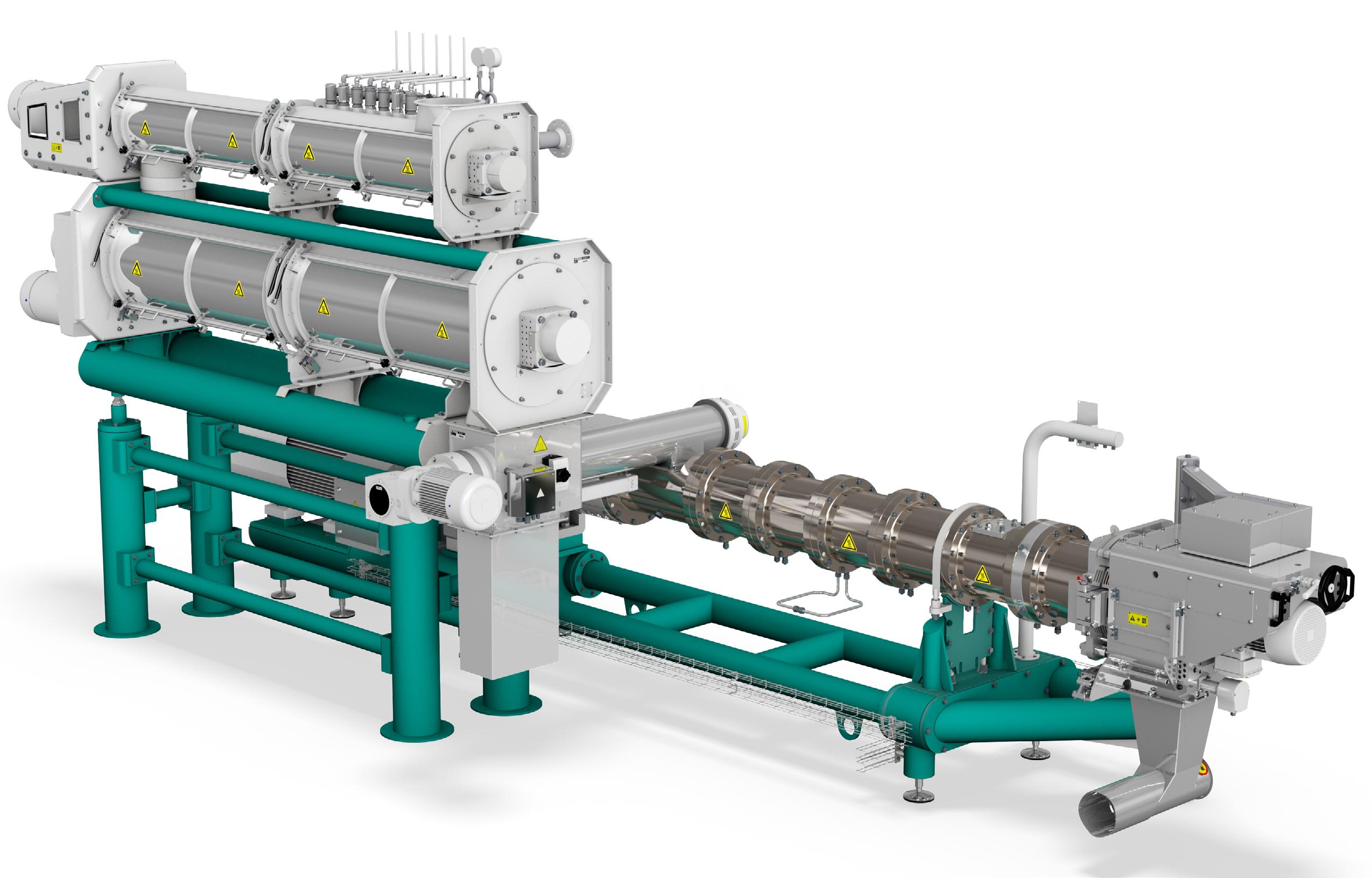
TECHNOLOGY FOCUS: EXTRUSION
Buhler's multifunctional singlescrew extruder PolyOne for the pet food and aqua feed industry

APPLICATION OF EXTRUSION IN THE FOOD AND FEED INDUSTRY
Cereal, Puffed Cereal, Shredded Cereal and Granola products.
According to Data Bridge Market Research, the Breakfast cereal market was USD 58.12 billion in 2022 and is expected to reach USD 92.54 billion by 2030, growing at a CAGR of 6.0% during the forecast period. Demand for flavored and lowsugar products are some of the factors driving market growth.
A study published in the Journal of Food Engineering investigated the effect of reducing salt and sugar on the extrusion processing characteristics, production quality, expansion, microstructure, and textural properties of extrudates in a wheat and corn blend snack.
It reported that despite the increased use of extrusion processes in the food and feed industries, "extrusion is still an art that has yet to be fully understood with regard to processing variables, ingredient interactions, and the effect of material modification on the textural properties of the end products."
Nowadays, starch-based snacks are often enriched with fibers and proteins which can have a major impact on the expansion characteristics, such as size and shape porosity, in the manufacturing process. Christian Hüttner, a process engineer at Coperion GmbH, noted that with consumers seeking ‘good-for-you’ extruded products, it is a challenge to introduce enough mechanical and thermal energy into the extrusion process due to changing extrudate consistencies with varying ingredients.
“The push for better-for-you snacks has increased the amount of dough that needs to be processed slightly differently, but it can perform just as well in extruders with some adjustments,” noted Nico Roesler, North American pretzel and snack equipment sales manager, Reading Bakery Systems (RBS).
Advancement in gluten-free doughs, on the other hand, affects the elasticity and strength of wheat-based snacks, so the dough doesn’t fill the extruder chamber as easily. However, Mike Shaw, sales account manager, snacks/cereals, Bühler Inc., noted that while healthy ingredients may require some
changes to the equipment, most can easily run on twin-screw extruders.
PET FOOD AND ANIMAL FEED PRODUCTS
Extrusion technology is extensively being used for pet food and animal feed products. Today, processors are incorporating new ingredients and functionality into these products to enhance nutrition, reduce processing costs, and, for pet foods, include consumer-preferred attributes like high protein and vegetable content.
According to studies, feed processed by extrusion technology has many advantages, such as starch gelatinization and degradation, protein denaturation, reduced anti-nutritional factors as well as increased palatability. The extruded feed becomes loose and disordered, which provides a larger contact area for enzymes, facilitates the contact of starch chains, peptide chains, and digestive enzymes, facilitates the digestion and absorption of feed, and thus improves the digestibility of feed.
FUTURE OF EXTRUSION TECHNOLOGY
The future of extrusion technology in the food and feed industry is likely to be characterized by innovation, sustainability, customization, and a continued focus on meeting consumer demands for healthy, convenient, and environmentally friendly products. Future advancements may focus on optimizing functional formulations for specific health benefits, such as immune support, gut health, and personalized nutrition.
Recently, Clextral, a France-based designer, manufacturer, and supplier of extruders in the food and feed sectors developed an extrusion porosification technology (EPT) that transforms high-value food concentrates into flowable, easily rehydrated powders that retain the essential properties of the original ingredients. This just shows that with extrusion, potential exists to mix carriers with active ingredients for enhanced functionality in foods and feed.
FEB/MARCH 2024 | MILLING MIDDLE EAST & AFRICA WWW.MILLINGMEA.COM 45
Barley in Africa
 BY WANGARI KAMAU
BY WANGARI KAMAU
In 2022, Africa generated about 5,872,264.44 tonnes of barley, a mere fraction of the global production of 151.7 million tonnes, as per data from the Food and Agriculture Organization of the United Nations cited by Knoema.com and the United States Department of Agriculture (USDA) figures from World Agricultural Production.com.
While Africa's contribution to the worldwide barley market remains relatively small, barley farming holds significant importance within the continent's agricultural landscape, notably in countries such as Ethiopia, Algeria, and Morocco. These nations collectively account for 80% of Africa's barley production, making barley the most important small grain after wheat.
Like many other regions globally, barley cultivation in Africa primarily serves the production of malt for beer and whisky. However, its applications expand beyond beverages to include staple foods like Injera in Ethiopia and play a crucial role in animal feed production, particularly in countries like Morocco.
Despite its economic importance, barley faces numerous challenges, with climate change being a significant concern. This article explores the production and consumption trends of barley across major African markets, shedding light on the sector's resilience strategies amidst mounting climate pressures.
ETHIOPIA TOPS PRODUCTION
Ethiopia, the second most populous nation in Africa, is poised to lead barley production on the continent in the market year (MY) 2023/2024. According to USDA data, production is estimated at 2.4 million metric tonnes (MMT), nearly double the forecast for the second largest producer, Morocco.
FEB/MARCH 2024 | MILLING MIDDLE EAST & AFRICA WWW.MILLINGMEA.COM 46
COMMODITY FOCUS: BARLEY IN AFRICA
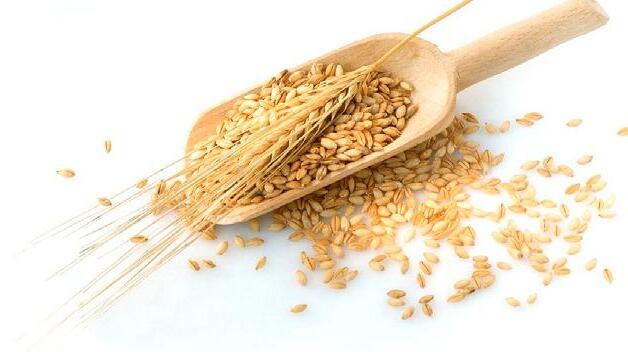
Following a harsh drought that caused production to plummet below 600 thousand tonnes in 2022, Morocco's output is rebounding. USDA predicts the Maghreb country to produce approximately 1.35 MMT in MY 2023/2024.
Algeria secured the second spot from Morocco in 2022 with an estimated production of 1.6 MMT. However, adverse weather conditions in 2023 pushed the North African nation back to third place. "Given the unfavorable outlook for MY 2023/24, FAS revises production forecasts (for Algeria) down to 1.02 MMT for barley," stated USDA in a report.
Tunisia, another significant grain producer, is also expected to experience production declines due to unfavorable weather conditions. USDA estimates barley production at 220,000 MT, nearly a 50% reduction compared to the 521,000 MT estimate for 2022. Additionally, the planted area decreased to 332,000 HA in 2023/24 from 430,000 HA in 2022/23. FAS notes that the double-digit decline in barley planting is attributed to strong wheat prices, prompting farmers to switch from barley to wheat.
Closing the top five, South Africa's barley production is anticipated to increase from 302,000 MT in MY 2022/203 to 375,000 MT in MY 2023/204. According to FAO, the year-onyear increase is driven by large plantings but will
ETHIOPIA, AFRICA'S NUMBER 1 BARLEY PRODUCER IS FORECASTED TO PRODUCE 2.4MMT, NEARLY DOUBLE THE FORECAST FOR THE SECOND LARGEST PRODUCER, MOROCCO.
still remain lower than the five-year average of 398,000 MT.
Other notable producers include Egypt: 108,000 MT, Kenya: 80,000 MT, Eritrea: 65,000 MT, and Zimbabwe: 55,000 MT. Overall, Africa's barley production for 2023/2024 is projected to reach 5.473 MMT based on calculations using available data from the FAS of the USDA.
BEER-BREWING, FEED INDUSTRIES DRIVES CONSUMPTION
Malt brewing stands as the primary use of barley across most countries in Sub-Saharan Africa, except for Ethiopia, where nearly 90% of barley is dedicated to local recipes such as Injera. Yet, even in Ethiopia, the portion of barley allocated
Barley production in Africa is dominated by Ethiopia, Morocco, Algeria, and South Africa.
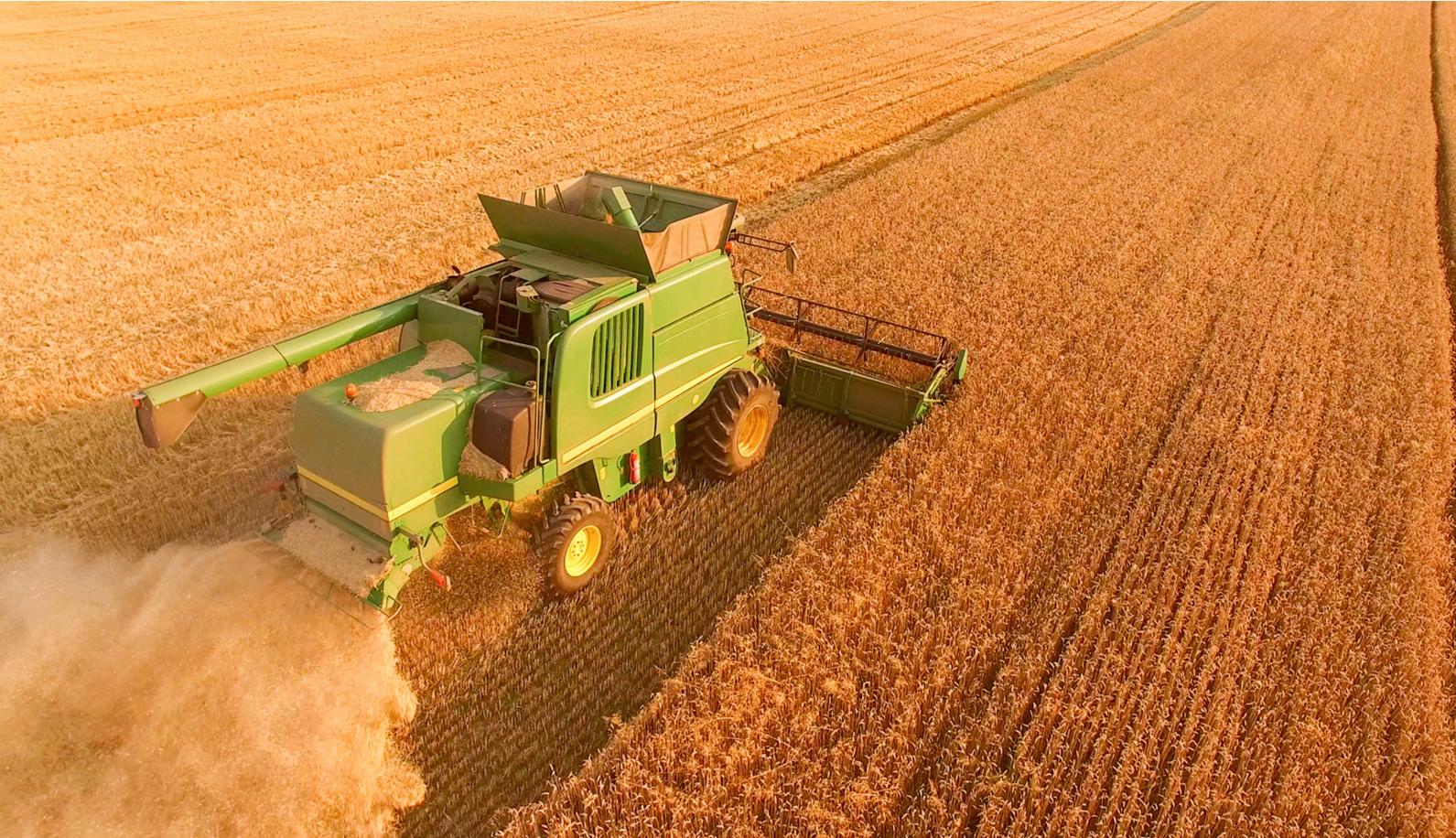
FEB/MARCH 2024 | MILLING MIDDLE EAST & AFRICA WWW.MILLINGMEA.COM 47
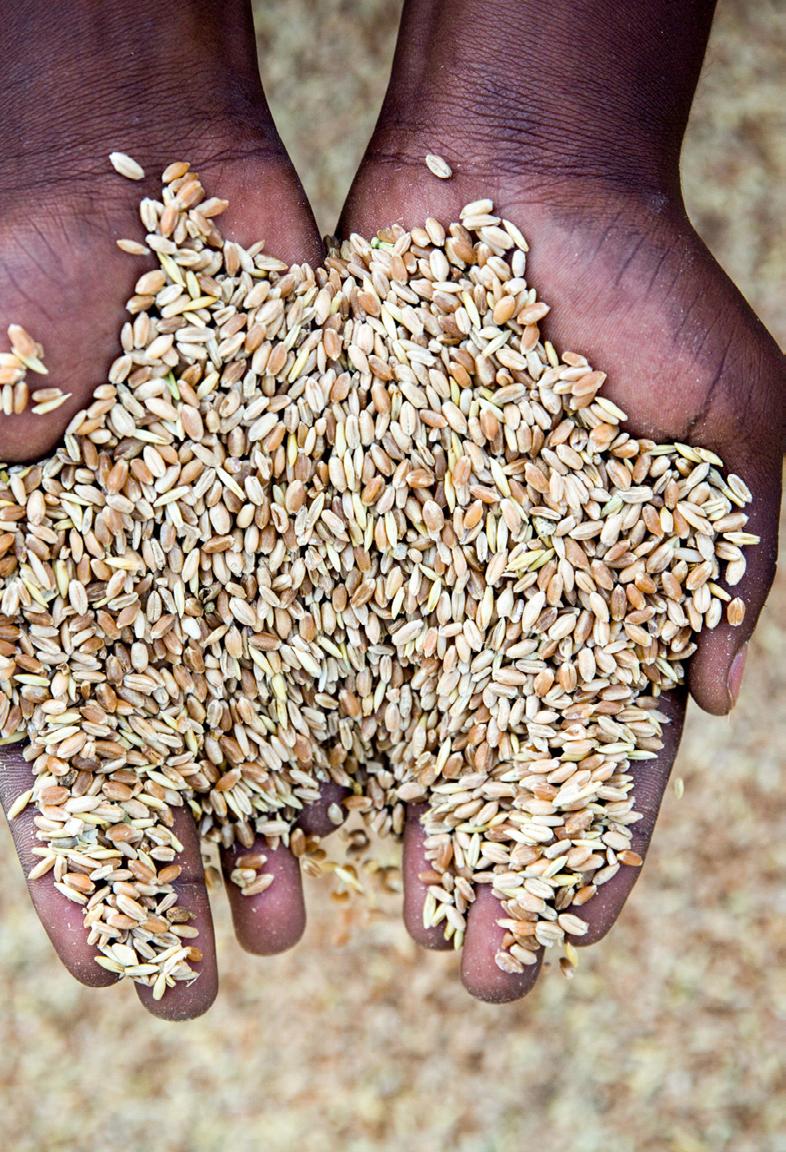
to malt production for brewing is on the rise, aligning with the country's rapidly expanding beer market. Global data indicates that the Ethiopian beer and cider market reached 148.18 billion Local Currency Units in 2022, with an anticipated growth rate surpassing 13% during 2023-2028.
In South Africa, another significant barley consumer in Sub-Saharan Africa, recent data from the Ministry of Agriculture, Land Reform, and Rural Development reveals that the rainbow nation consumed approximately 600,000 MT of barley in 2020. The Ministry's report emphasizes that barley in South Africa is primarily cultivated for malting purposes, as the country's ample maize production serves as the primary ingredient in animal feed.
Across North Africa, barley demand is primarily driven by animal feed for sheep, cattle, and camels, with minor allocations for green fodder and human food preparations like couscous and bread. Morocco, the largest barley consumer in the region, is projected to consume approximately 2.3
MMT, while neighboring Algeria's consumption forecast for MY2023/2024 stands slightly lower at 1.735 MMT, according to USDA estimates.
While beer production propels barley consumption in sub-Saharan Africa, analysts underscore that animal feed constitutes the primary growth driver in North Africa. As the animal population in these countries expands to sustain their growing populations, higher consumption rates of barley in animal feed are anticipated in the future.
TRADE
Most countries in Africa are not self-sufficient when it comes to barley. Even Ethiopia, the continent’s largest producer, is unable to meet its local demand. According to data from OEC World, Ethiopia imported barley worth US$17.2 million in 2021, ranking it as the 45th largest importer globally. The country mainly sourced its barley from Australia, Belgium, France, and Croatia.
While Ethiopia holds the title of the largest producer of barley, its imports are nowhere close to those of Africa’s largest barley importer, Morocco. According to USDA data, the Maghreb nation is forecasted to import 1 million metric tonnes (MMT) of barley in MY2023/2024. Morocco primarily sources its barley from EU27 countries, accounting for over 90% of imports. However, in the current market year, USDA data has shown some notable shipments from Moldova, Russia, and Ukraine. Algeria, Africa’s second-largest importer, is expected to import about 700 thousand metric tonnes (MT) of barley in MY 2023/2024. Similarly, Algeria relies on the EU27 for over 90% of its barley imports.
War-torn Libya stands as the third-largest importer of

FEB/MARCH 2024 | MILLING MIDDLE EAST & AFRICA WWW.MILLINGMEA.COM 48
COMMODITY FOCUS: BARLEY IN AFRICA
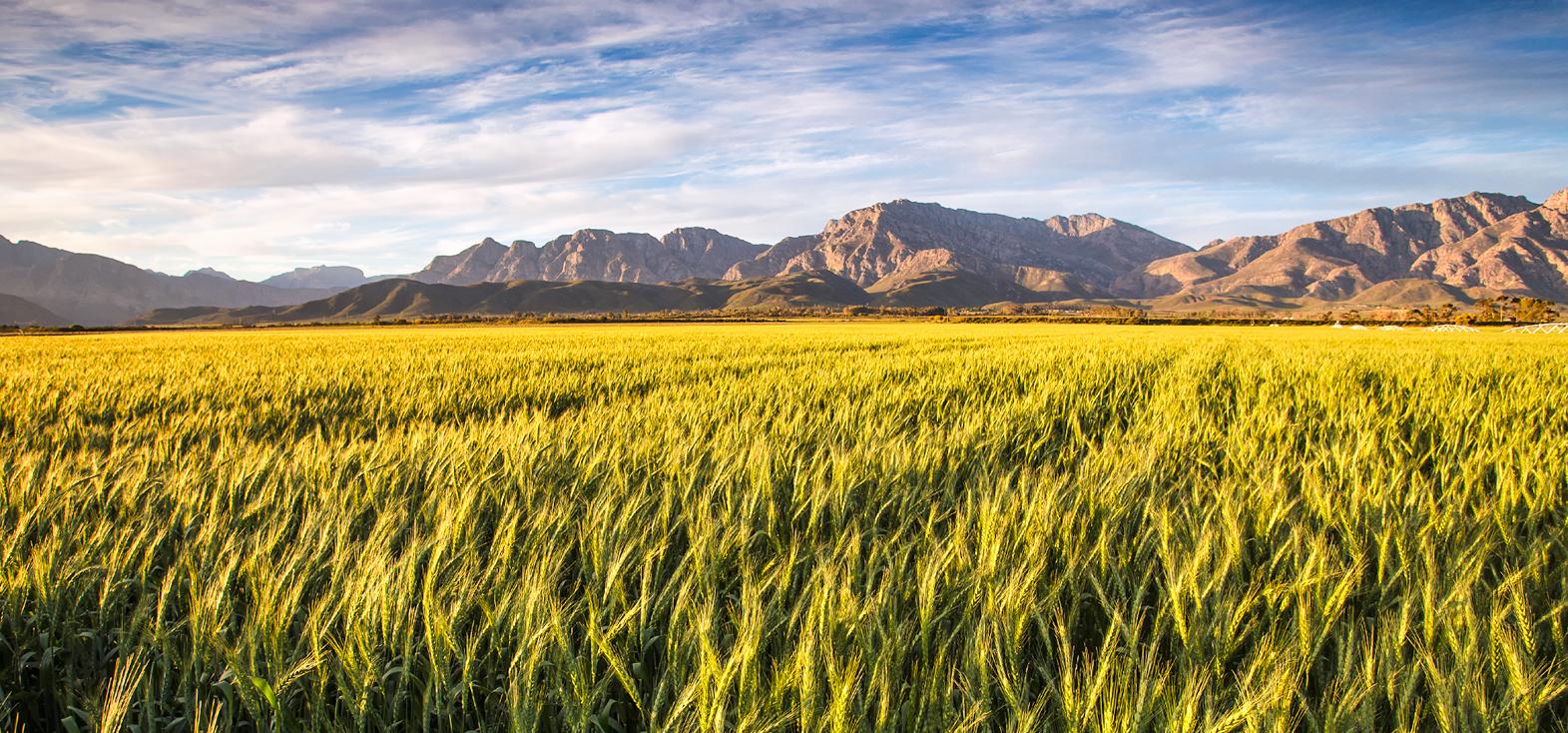
barley in Africa. Given its current state, it's difficult to provide an accurate estimate of the country’s imports. USDA forecasts barley imports in MY2022/2023 at 500 thousand MT, down from 900 thousand the year before. However, a January 2024 publication by the Russian embassy in Libya on the application “Telegram” showed that Libya ranked among the top five importers of barley from Russia, holding second place with quantities of up to 733 thousand tons, marking a 136% increase.
ADOPTING PRODUCTION TO CLIMATE CHANGE
Barley production across the continent has seen significant fluctuations in recent years, largely attributed to climate change. Prolonged drought periods have notably impacted production in Algeria and Morocco, two of the continent's major producers. As barley serves as a crucial commodity for both animal feed and human consumption, several governments have ramped up efforts to promote production despite these fluctuations.
In Algeria, USDA reports that researchers are advocating for farmers to adopt new watersaving techniques and irrigation technologies, alongside the development of drought-resistant cereals to mitigate water stress and climate change effects. The Algerian government is actively encouraging investments in the southern region, where underground water resources exist, to cultivate strategic crops like barley, aiming to reduce import dependence and enhance food security. USDA notes that the Algerian government targets 1 million hectares of cereals planted in the south by 2030, a goal signaling ambitious strides toward agricultural
expansion in the Sahara, with mechanisms in place to attract investors.
Meanwhile, in Morocco, the government has launched a $1 billion plan to alleviate drought impacts in the agricultural sector. According to FAS, $400 million is allocated to support the purchase and distribution of inputs, including seeds and fertilizers, while the remaining $100 million aims to bolster Credit Agricole and enhance farmer access to financing.
In South Africa, particularly in the Northern Cape, production occurs under irrigation, ensuring grain availability even during drought periods. The South African Barley Breeding Institute (SABBI) endeavors to develop barley cultivars offering increased yield, disease resistance, and quality. Notably, SABBI has introduced three varieties—Kadie, Hessekwa, and Elim—recommended for malting barley production in the Southern Cape where rainfed agriculture is prevalent. Additionally, SABBI has bred Genie and Overture for commercial production of malted barley under irrigation.
Through the Africa RISING project, the International Center for Agricultural Research in the Dry Areas (ICARDA) and the Ethiopian Institute for Agricultural Research (EIAR) collaborate to introduce improved malt barley varieties supporting Ethiopia's expanding malt market, particularly in the beer brewing industry. Since 2017, six high-yielding and pestresistant malt barley varieties—Bahati, Bekoji-1, HB1964, Holker, IBON-174, and Sabini—have been introduced and evaluated in the highlands of Amhara, Tigray, SNNP, and Oromia regions. These varieties exhibit significant potential in meeting domestic demand and diversifying farmers' sources of income.
Most barley grown in sub-Saharan is used in production of beer malt.
733,000 IN NUMBERS
AMOUNT OF TONNES THAT LIBYA IS REPORTED TO HAVE IMPORTED FROM RUSSIA
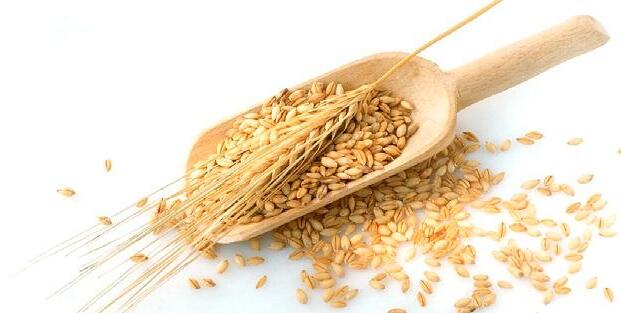
FEB/MARCH 2024 | MILLING MIDDLE EAST & AFRICA WWW.MILLINGMEA.COM
TOP 10 BARLEY PRODUCERS IN AFRICA

ETHIOPIA - 2,184,000 MT
Ethiopia is currently the largest barley producer in Africa, with a yield of 2.2 tons per hectare in the 2022/23 marketing year. This is a slight reduction from the 2,350,000 metric tons harvested in the 2021/22 MY. The USDA data estimates production for the 2023/24 MY to be 2,400,000 metric tons. Although the planted area has decreased, the yield per hectare is estimated to increase to 2.5 tons/ha.
ALGERIA - 1,600,000 MT
Algeria ranks second, with a yield of 1.6 tons/ha for the 2022-23 marketing year. The 1,600,000 metric tons harvested in that marketing year nearly doubled the 2021/22 harvest of 950,000 MT, despite the planted area remaining unchanged. In MY 2023/24, the planted area remains unchanged, but the yield is expected to decrease, with the estimated harvest standing at 1,025,000 MT.
MOROCCO - 700,000MT
Morocco was the largest barley producer in the 2021/2022 marketing year, harvesting 2,780,000 metric tons. Battered by severe drought, Morocco could only manage only 700,000 metric tons. In 2023/24, production is estimated to increase to 1,350,000 metric tons on 1,200,000 hectares.
02 03 04
TUNISIA - 460,000 MT
Tunisia ranks fourth on our list, with 460,000 MT in the 2022/23 marketing year. The production level is slightly higher than the 430,000 metric tons harvested in the previous marketing year, thanks to more land being used for barley cultivation. In the 2023/24 marketing year, the USDA estimates that production will drop to 170,000 MT, partly due to a reduction in the planted area.
Source: USDA
SOUTH AFRICA - 302,000 MT
In South Africa, the 302,000 metric tons of barley produced in 2022/23 represented a decrease from the 334,000 metric tons harvested in 2021/22, despite an expansion of the barley cultivation area. In the 2023/24 marketing year, more land will go to barley cultivation, with production forecast at 360,000 metric tons which is lower than the 5-year average of 398,000 metric tons.
01 05
ALGERIA
TUNISIA MOROCCO
EGYPT - 108,000 MT

06
In Egypt, production has remained steady for the last five marketing years, with a harvest of 108,000 metric tons from an 83,000-hectare planted area. The expected yield of 1.3 tons per hectare for the 2023/24 marketing year indicates a consistent harvest.
LIBYA - 100,000 MT
ERITREA
07
Libya has maintained consistent production statistics for more than five years, with an average of 100,000 metric tons from 210,000 hectares, resulting in a dismal yield of 0.5 tons per hectare. This trend is expected to continue in the 2023/24 marketing year.
08
KENYA - 80,000 MT
In the 2022/2023 marketing year, Kenya's barley production more than doubled from the 33,000 metric tons harvested in 2021/22. The planted area increased from 13,000 to 20,000 hectares, and the yield improved from 2.5 tons per hectare to 4.0 tons per hectare. Production statistics for 2023/24 are estimated to remain unchanged from those of 2022/23.
ERITREA - 65,000MT
Eritrea, which neighbors Ethiopia- the largest barley producer in Africahas consistently produced 65,000 metric tons on 45,000 hectares. The same trend is expected to continue in the 2023/24 marketing year with a yield of 1.4 tons per hectare.
ZIMBABWE - 55,000 MT
09 10
Zimbabwe is ranked last on our list, with a production of 55,000 metric tons on 10,000 hectares of planted area. The country’s yield of 5.5 tons per hectare has remained consistent for more than five years, and it is anticipated to continue in the 2023/24 marketing year.
EGYPT
TUNISIA
LIBYA
KENYA
ETHIOPIA
SOUTH AFRICA
ZIMBABWE
ACQUISITION
Dawn Foods expands bakery solutions portfolio with Royal Steensma acquisition
NETHERLANDS – Dawn Foods, a global bakery manufacturer and ingredient supplier, has finalized its acquisition of Royal Steensma, a prominent family-owned bakery ingredients manufacturing company based in Leeuwarden, the Netherlands.
The acquisition, which closed on January 31, represents a significant milestone for Dawn Foods in expanding its product portfolio and manufacturing capabilities to better serve its customers globally.
Royal Steensma offers a wide range of bakery products, specializing in fat-based coatings, almond and confectionery pastes, bakery mixes, fruit fillings, as well as infused, candied

fruits, and decorations.
With four manufacturing plants in the Netherlands and an additional facility in Thailand, the acquisition strengthens Dawn Foods’ global presence in the bakery ingredients market.
Carrie Jones-Barber, the CEO of Dawn Foods, expressed enthusiasm about the acquisition, emphasizing the potential for knowledge exchange and improved product distribution capabilities.
She stated, “The expansion of our manufacturing capabilities and product portfolio further strengthens our mission to provide customers with bakery solutions that truly inspire and help them achieve their business goals.”
Puratos unveils sourdough made with regeneratively farmed flour
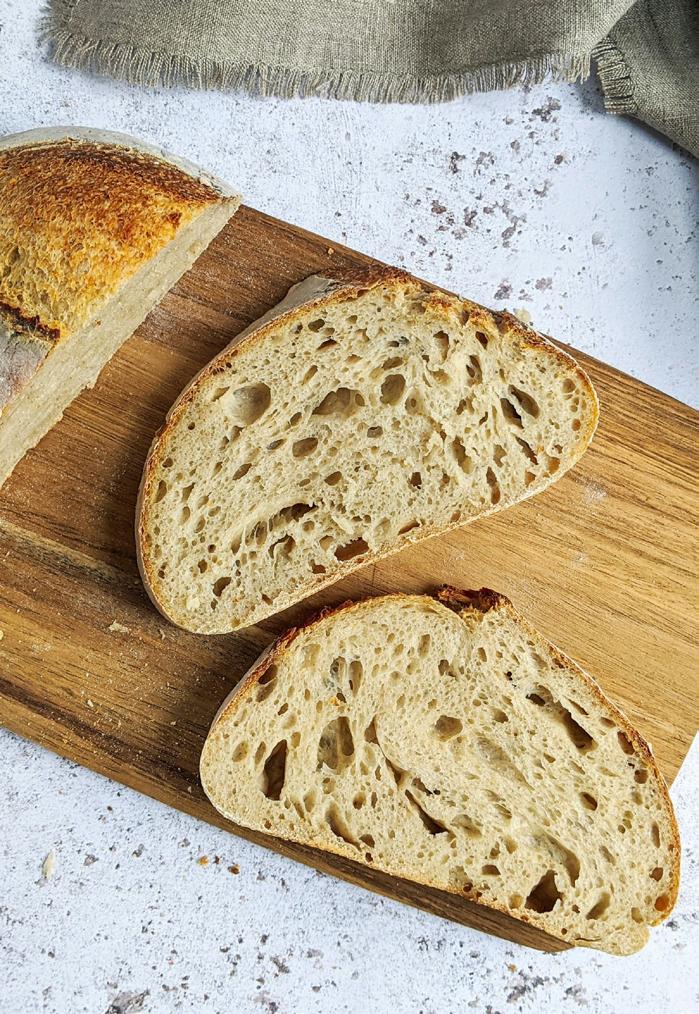
UK – Puratos UK, a bakery, patisserie and chocolate ingredients supplier, has launched ‘Sapore Sally’, a sourdough solution made with regeneratively farmed flour.
The latest innovation in its Sapore range of living and inactive sourdoughs, ‘Sapore Sally’, is a living sourdough designed to help large bakeries diversify their portfolios with locally produced, sustainably sourced sourdough products.
Sapore Sally has a creamy, slightly tangy taste and can be used to enhance the flavour of a standard bread naturally or, when combined with a sourdough starter, adapts the flavour of a sourdough bread.
The regeneratively farmed flour used to create the product is from the UK-based supplier Wildfarmed. The launch comes as UK consumers become increasingly conscious of their food choices.
According to the latest Taste Tomorrow research, 71% of consumers in the UK think that food made with local ingredients positively impacts the environment.
Wildfarmed works with over 100 farmers across the UK and France,
who embrace regenerative approaches to improve farm biodiversity and soil condition.
All of the supplier’s crops are grown without the use of pesticides, and all growers – who are independently audited – must adhere to a robust set of the Wildfarmed Regenerative Standards.
SAPORE SALLY HAS A CREAMY, SLIGHTLY TANGY TASTE AND CAN BE USED TO ENHANCE THE FLAVOUR OF A STANDARD BREAD NATURALLY.
FEB/MARCH 2024 | MILLING MIDDLE EAST & AFRICA WWW.MILLINGMEA.COM 52 SUPPLIER NEWS & INNOVATIONS
PRODUCT
NEW
Bühler eyes emerging rice processing opportunities in Saudi Arabia
SAUDI ARABIA – Bühler, a leading supplier of milling and food processing technologies, seeks to tap into business opportunities in Saudi Arabia through providing its state-of-the-art rice processing technology.
Mohamed Jebabra, Country Manager, Bühler Saudi Arabia said that existing customers and new investors ready to enter the rice processing market have recognized the huge potential that the field offers and are seeking to enhance their existing operations.
“Investors want to buy in bulk, build processing facilities, and enter the B2B and retail market,”
“They see the potential for business optimization – for example, rice increases in value with age – if it is imported in bulk and stored in silos,” said Jebabra.
According to Jebabra, many current customers and new investors in Saudi have recognized the enormous market potential offered by processing the rice

in Saudi itself and are seeking to enter the market.
This, according to him, along with the government’s food security concerns, offers a large area of opportunity for Bühler’s storage solutions and technology.
“This opens up opportunities for
Bühler’s complete storage solutions, such as its conveyors and the Mercury MES factory automation system, which is able to cover all stages of white rice processing from intake and cleaning to polishing, sorting, and packing for differing plant capacity and requirements.”
Kemin Industries introduces new blend to enhance freshness of dry bakery products

EMEA – Kemin Industries, a global leader in ingredient manufacturing, has unveiled its latest innovation, OLESSENCE™ B Liquid, designed to elevate flavor profiles while preserving freshness in dry bakery products across Europe, the Middle East, and Africa (EMEA).
This groundbreaking product responds to the growing consumer demand for fresh, label-friendly ingredients, offering food producers an effective solution to meet evolving market preferences.
Incorporating a synergistic blend of plant extracts, including olive extract, OLESSENCE™ B Liquid represents the
next generation of natural solutions for the bakery industry.
By leveraging the inherent properties of these natural ingredients, Kemin aims to address the dual challenge of maintaining product quality and extending shelf life in dry bakery products.
The unique blend of natural flavors in OLESSENCE™ B Liquid provides a balanced flavor profile while also offering secondary antioxidant properties.
These bioactive compounds play a crucial role in delaying the oxidation process and mitigating the development of rancidity in bakery products, contributing to extended shelf life and enhanced sensory experience.
FEB/MARCH 2024 | MILLING MIDDLE EAST & AFRICA WWW.MILLINGMEA.COM 53
STRATEGY
PRODUCT
NEW
Alapala completes 550 ton/day wheat flour mill project in Pakistan

PAKISTAN – Alapala has completed a new ‘Wheat Flour mill project’ for Boota Brother Flour Mills, a company that specializes in the production and distribution of flour, in December 2023.
This achievement underscores Alapala’s unwavering commitment to technological innovation and excellence in the field of milling.
The newly completed facility, strategically located in Multan City,
represents a significant leap forward in both capacity and efficiency, further solidifying Alapala’s position as an industry leader.
The scope of the ‘Wheat Flour mill project’ includes the installation of two new milling lines with 300 TPD and 250 TPD.
The flour mill diagram is designed for processing Pakistani wheat to produce high-quality Maida 1, Maida2, Atta, and
Fine flours for the domestic market.
The project is supplied by Alapala on a turnkey basis including the project design, process engineering, manufacturing, project management, installation, commissioning, and training services.
THE
SCOPE
OF THE WHEAT MILL PROJECT INCLUDES THE INSTALLATION OF TWO NEW MILLING LINES WITH CAPACITIES OF 300TPD AND 250 TPD.
GoodMills Innovation unveils Slow Milling ingredients for artisanal baking
GERMANY - GoodMills Innovation, a company that specializes in developing clean-label ingredients based on cereals and pulses, has introduced its Slow Milling range of ingredients for artisanal baking.
This unique portfolio offers a costeffective and clean label solution for crafting authentic, large-scale bakery products that meet the evolving market trends and consumer demands for natural, sustainable, and high-quality goods.
The Slow Milling range boasts key ingredients like Ferment’tic, Kastanienerbse, and Wood-fired Malt, specifically designed to replicate traditional artisanal baking on an industrial scale.

improver within the range, enhances dough handling, prolongs freshness, and supports the creation of Mediterraneanstyle moist crumbs with large holes and crispy crusts.
On the other hand, Kastanienerbse, derived from roasted yellow peas, offers a clean-label alternative with a nutty flavor, firm bite, and moist, rich crumb.
Wood-fired Malt, a rare product in the market, imparts the aromatic flavor characteristic of goods baked in a woodfired oven.
GoodMills Innovation, which is part of the GoodMills Group, Europe’s largest milling organization, alluded to this launch during the Food Ingredients Europe (FiE) held in Germany in December 2023.
FEB/MARCH 2024 | MILLING MIDDLE EAST & AFRICA WWW.MILLINGMEA.COM 54
INVESTMENT SUPPLIER NEWS & INNOVATIONS
NEW PRODUCT
Ferment’tic, a natural baking
ACQUISITION
Omas Industries expands into UK and northern Europe
EUROPE — Italy-based milling technology provider Omas Industries has expanded into the UK and northern European markets.
The strategic move comes at a time of remarkable growth, with the company experiencing a consistent increase in orders and pursuing an ambitious hiring plan to strengthen its international presence, Omas said.
The newly formed Omas Northern Europe will be spearheaded by Peter Marriott, former sales manager EMEA of a leading global manufacturer of equipment for the rice, wheat, and corn industry, with over 30 years industry experience.
“I am very honored that such a remarkable and experienced milling

expert like Peter chose Omas and I’m sure that he will contribute to promote our technologies and presence in the market, providing support to the customers,” said Pietro Barbalarga, sales director of Omas Industries. “
He added that this expansion decision reflects a bold step in line with the growing market demand for innovative solutions in the grain milling sector.
SafeGrain partners iGrain to expand global reach
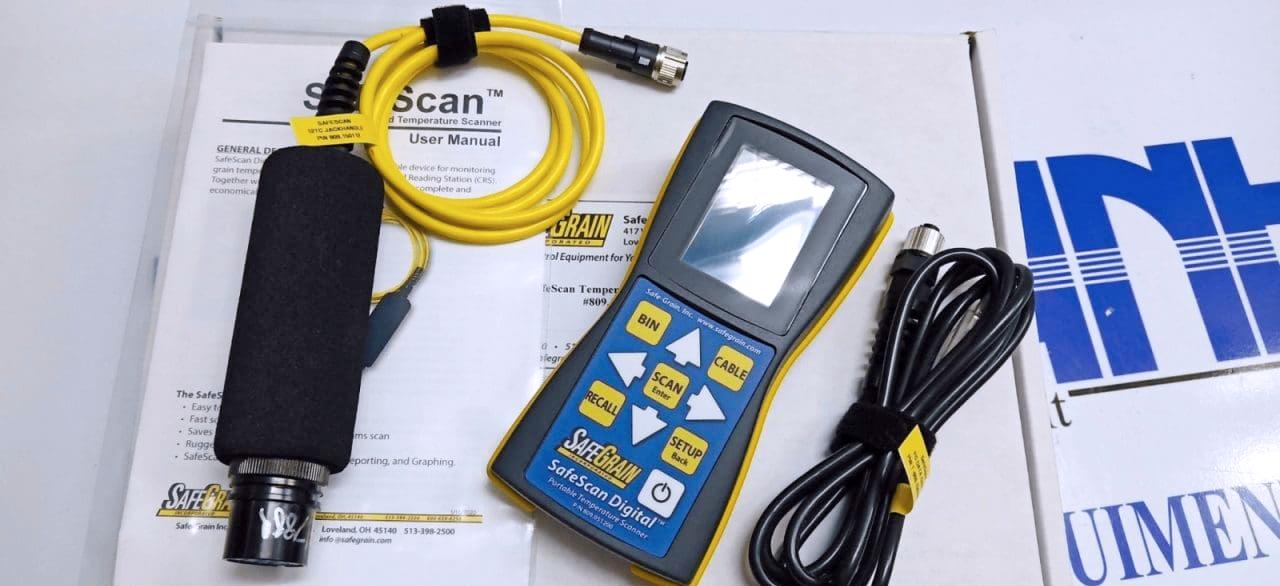
USA – SafeGrain, a company that manufactures and supplies quality control and hazard monitoring equipment for the agricultural industry, has announced a strategic partnership with iGrain, a Denmark-based leader in digital grain monitoring.
This partnership gives Safe JBT exclusive rights to manufacture and distribute iGrain’s digital products in North America, encompassing the United States, Canada, and Mexico.
Concurrently, iG JBT proposes takeover of Marel for the third time rain will handle the international distribution of SafeGrain’s hazard monitoring controls.
President and CEO of Safe JBT proposes takeover of Marel for the third time Grain, Zach Carr expressed his enthusiasm for the collaboration, stating, “This strategic partnership will position SafeGrain as the leader in grain monitoring technology.”
Carr emphasized the seamless
integration of iGrain’s digital products into SafeGrain’s technologically advanced portfolio, a testament to SafeGrain’s 70-year history of innovation.
The expansion of SafeGrain’s portfolio is set to include a variety of advanced tools, such as fan automation, All-in-One sensor cables capable of monitoring temperature, moisture, and CO2 levels, as well as digital temperature sensor cables.
An added highlight is the introduction of SafeGrain’s new dashboard manager and smart app, designed to provide on-demand data for precise inventory management and decision-making.
iGrain, with over two decades of experience in advanced grain monitoring and control solutions, brings a wealth of knowledge and innovation to the partnership, marking a significant step forward in the evolution of grain storage and quality management technologies.
FEB/MARCH 2024 | MILLING MIDDLE EAST & AFRICA WWW.MILLINGMEA.COM 55
PARTNERSHIP
DISTRIBUTION
Ingredion successfully concludes sale of South Korean business
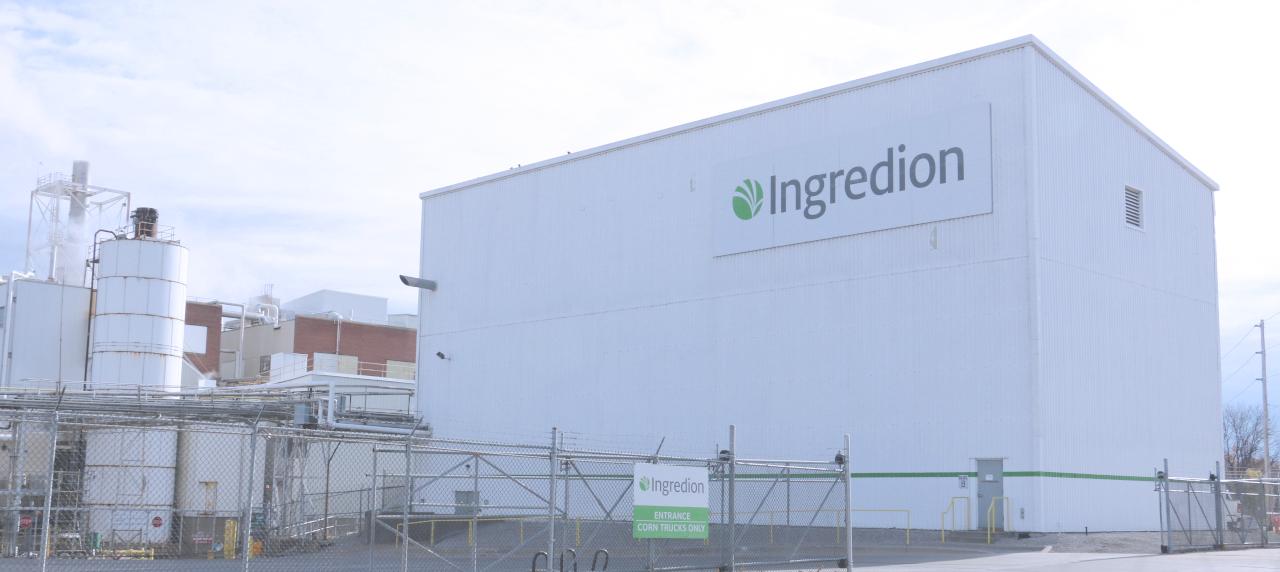
SOUTH KOREA – Ingredion, a global ingredients solutions provider, has completed the sale of its business operations in South Korea to an affiliate of the Sajo Group, a prominent Seoulbased food company.
The sale of the South Korean business, amounting to US$294 million,
marks a crucial step in Ingredion’s ongoing business transformation journey.
Ingredion enlisted Citi as its financial adviser and Kim & Chang as its legal adviser for the divestment process, ensuring a smooth transition and compliance with regulatory
requirements.
Jim Zallie, President and Chief Executive Officer of Ingredion emphasized the significance of reshaping the company’s portfolio to unlock value and strategically redeploy assets.
Zallie stated, “The sale of our business in South Korea is an important step for Ingredion as we reshape our portfolio to unlock value and redeploy assets, creating value for shareholders.”
On February 1, Ingredion received US$247 million, net of transaction costs, and anticipates the receipt of the remaining US$47 million over the next three years.
The completion of this transaction aligns with Ingredion’s commitment to optimizing its global operations and focusing on strategic areas of growth.
Imas emerges as leading Turkish exporter of grain and milling machinery
TURKEY - Imas has been recognized as the leading exporter of grain and feed milling machinery in Turkey, according to the 2023 export data released by the Turkey Exporters Assembly.
Imas, renowned for its comprehensive range of grain and feed milling machinery, has successfully undertaken the construction of turnkey flour, maize, and feed mills globally.
The company boasts over 500 project references across five continents and operates in more than 100 countries.
Throughout 2023, Imas secured its position as Turkey’s leading exporter in the grain and feed milling machinery sector, with a notable presence in the Middle East, Africa, America, Europe, Far East, Russia, and CIS regions.
One notable aspect that sets Imas apart is its status as the sole Turkish
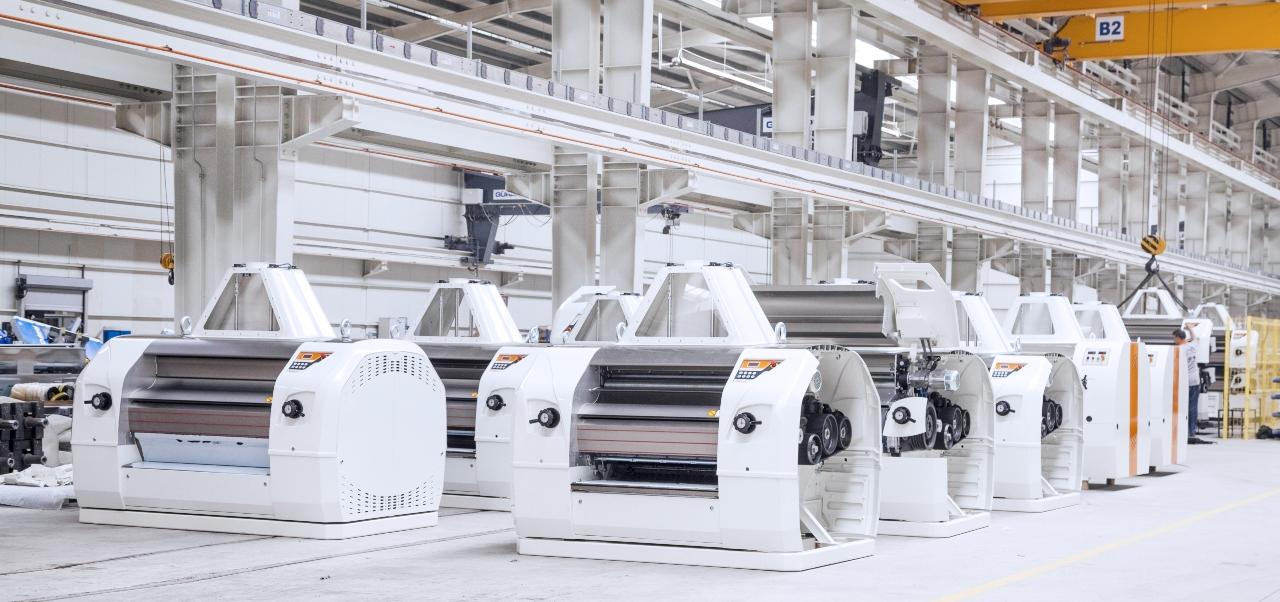
milling machinery manufacturer with a public offering.
Imas shares (IMASM) have been traded on the Istanbul Stock Exchange since April 2022, establishing the company as a trusted partner for turnkey grain and feed milling projects across the globe.
the company has consistently been recognized for its commitment to research and development (R&D), securing a place among the Top 250 R&D Leaders of Turkey since 2015 and ranking in the Top 10 R&D Leaders of Turkish machinery across all industrial segments.
FEB/MARCH 2024 | MILLING MIDDLE EAST & AFRICA WWW.MILLINGMEA.COM 56
MARKET EXPANSION
DIVESTMENT
SUPPLIER NEWS & INNOVATIONS


FW AFRICA UPCOMING EVENTS 2024 HEALTHCARE AGRICULTURE FOOD MANUFACTURING, RETAIL & HORECA FOOD MANUFACTURING, RETAIL & HORECA JUNE 12-14, 2024 | Sarit Expo Centre, Nairobi, Kenya JULY 18-20, 2024 | Sarit Expo Centre, Nairobi, Kenya OCTOBER 2024 | Nairobi, Kenya SEPTEMBER 17-19, 2024 | Lagos, Nigeria SEPTEMBER 3-5, 2024 | Kampala, Uganda www.africahospitalsexpo.com www.africafarmtechexpo.com www.africafreshproducexpo.com www.afmass.com www.afmass.com/west www.afmass.com/Ug www.dairymanufacturingafrica.com www.africameatpoultryexpo.com www.africafuturefoodsummit.com www.africabeveragesexpo.com www.africabeveragesexpo.com Co-located with: Co-located with: Co-located with: Co-located with: Co-located with: Co-located with: Co-located with: Co-located with: FOOD Afmass EXPO Eastern Africa Dairy AFRICA MANUFACTURING EXPO AFRICA Food Safety SUMMIT AFRICA Food Safety SUMMIT www.africafoodsafetysummit.com www.africafoodsafetysummit.com BUSINESS SUMMIT AFRICA The Africa CEO & Leadership Forum AFRICA FUTURE FOOD SUMMIT AFRICA EXPO Fresh Produce Afmass NIGERIA EXPO FOOD Afmass UGANDA EXPO FOOD Africa Expo BEVERAGES Africa Expo BEVERAGES FOOD MANUFACTURING, RETAIL & HORECA FOOD MANUFACTURING, RETAIL & HORECA Expo Hospitals Africa AFRICA EXPO P ULTRY MEAT & EXPO AFRICA FARMTECH SEP 10-12, 2024 | Safari Park Hotel, Nairobi, Kenya SEP 10-12, 2024 | Safari Park Hotel, Nairobi, Kenya www.africabizsummit.com LEADERSHIP, ENTREPRENEURSHIP & SUSTAINABILITY
Wow! Better cakes at a lower cost

We’ve been turning challenges into tastiness for over 40 years.
We patented our powdered, whipping-active cake emulsifiers over four decades ago, and to this day they provide a series of benefits to producers of long-life cake manufacturers around the world.
Our Palsgaard ® SA Series is the perfect alternative to cake gels and shortenings when you’re looking to optimize your cake recipe. They can also help to reduce your egg content – bringing some serious potential cost savings.
Ensures soft, moist and delicious cakes
Convenient powder form – no need for refrigeration
Available from our warehouses across Africa
Produced in Denmark
BRINGING GOOD THINGS TOGETHER PALSGAARD ® SA SERIES
Find
out more at www.palsgaard.com/egg-reduction






















































































































































 BY WANGARI KAMAU
BY WANGARI KAMAU



























 BY MARTHA KURIA
BY MARTHA KURIA



























 BY WANGARI KAMAU
BY WANGARI KAMAU




















